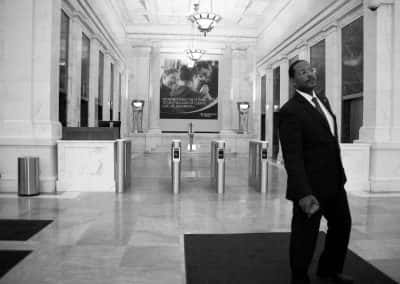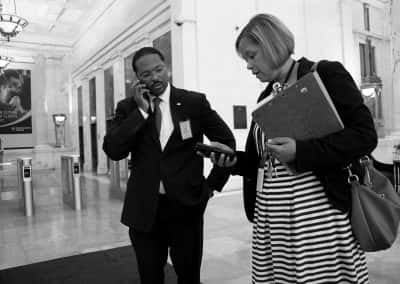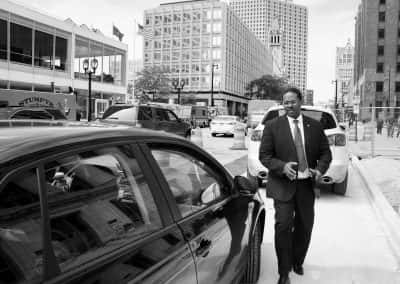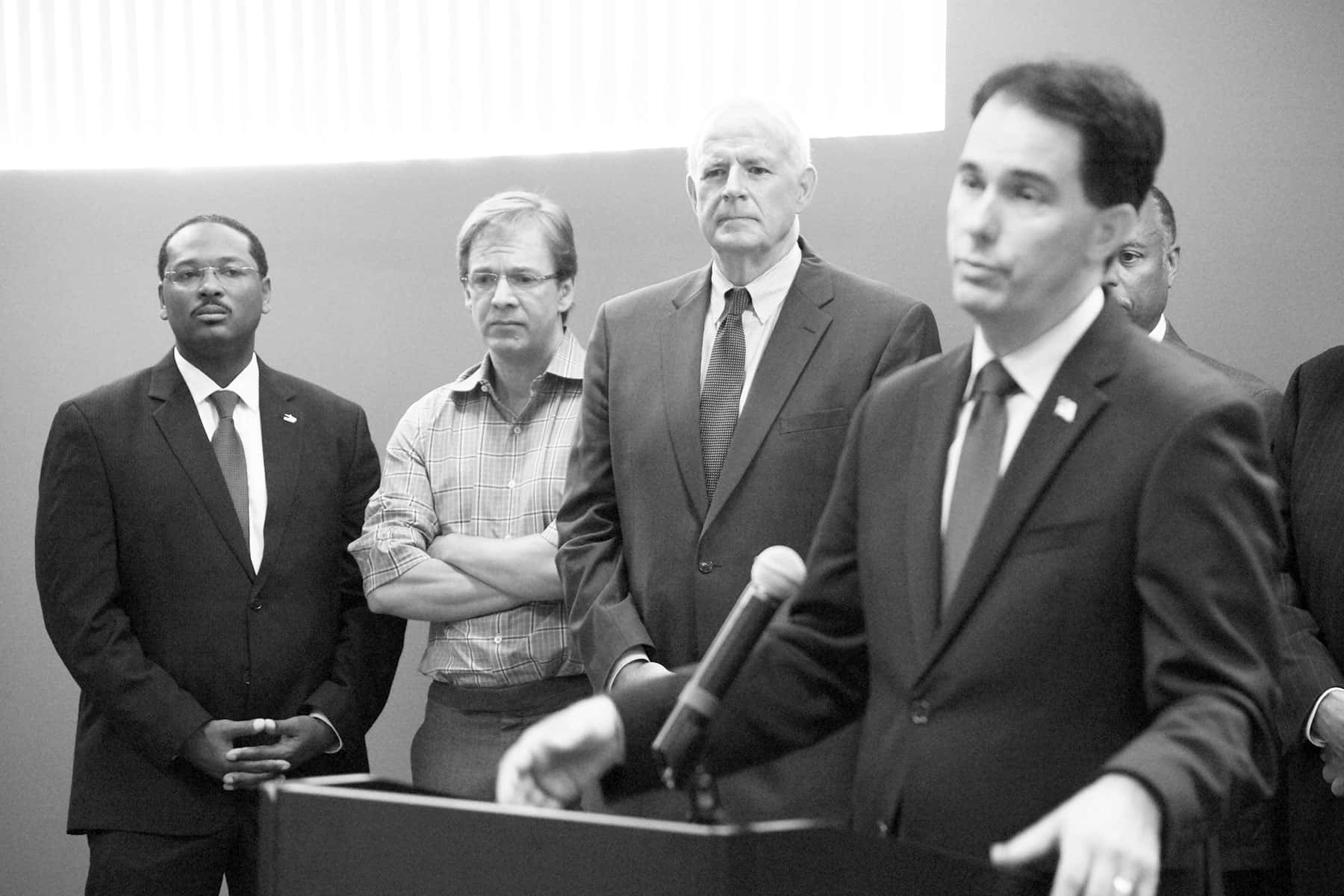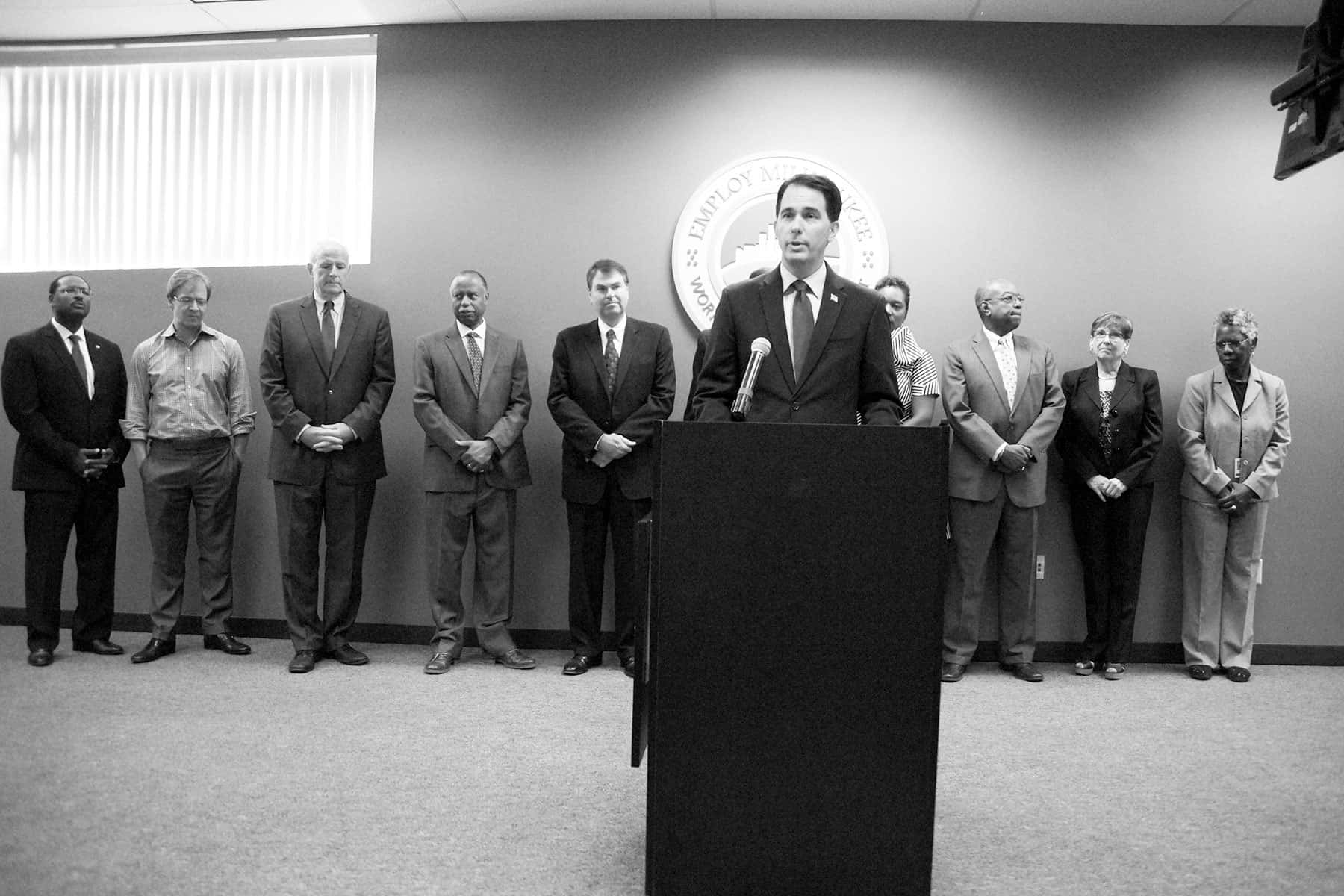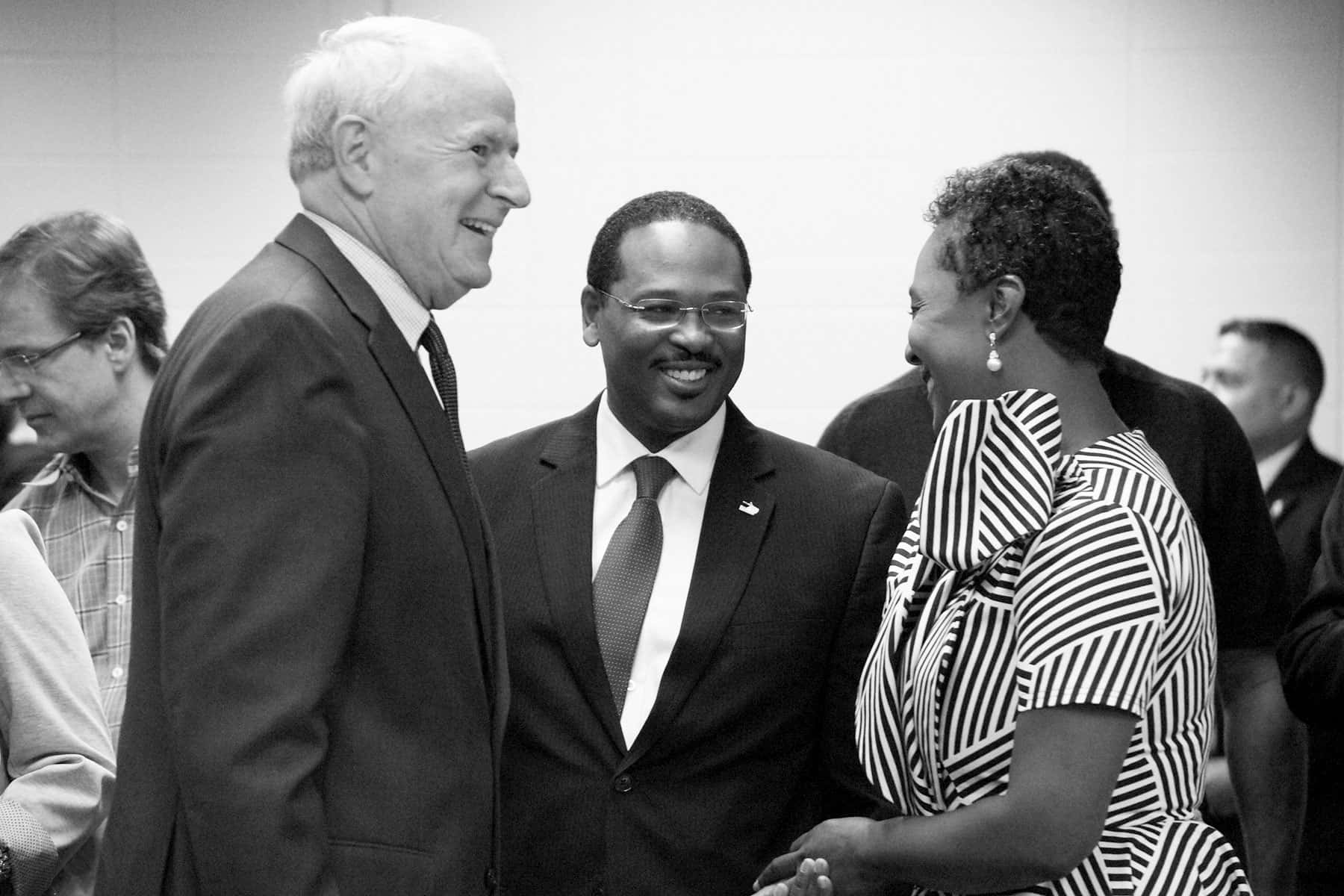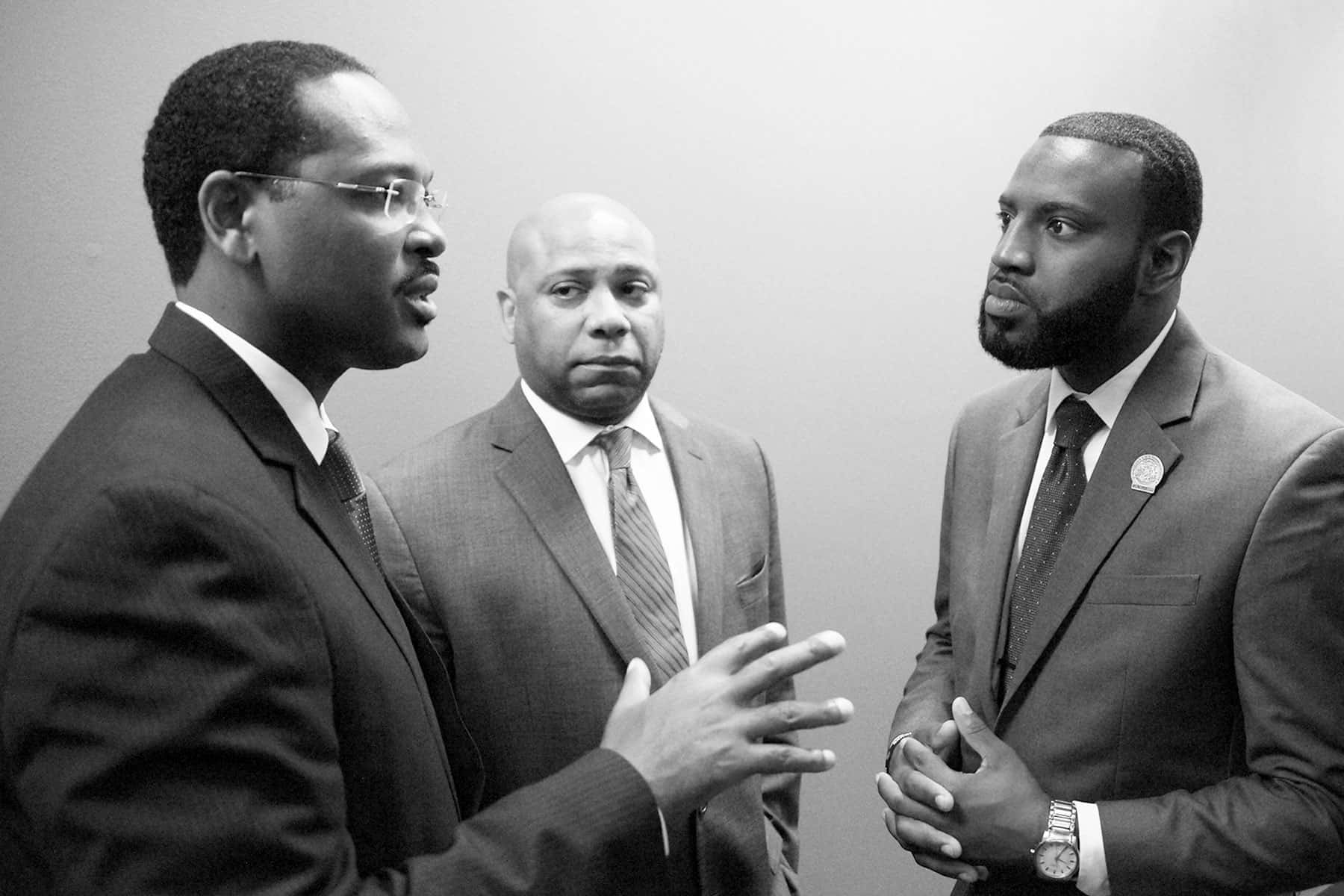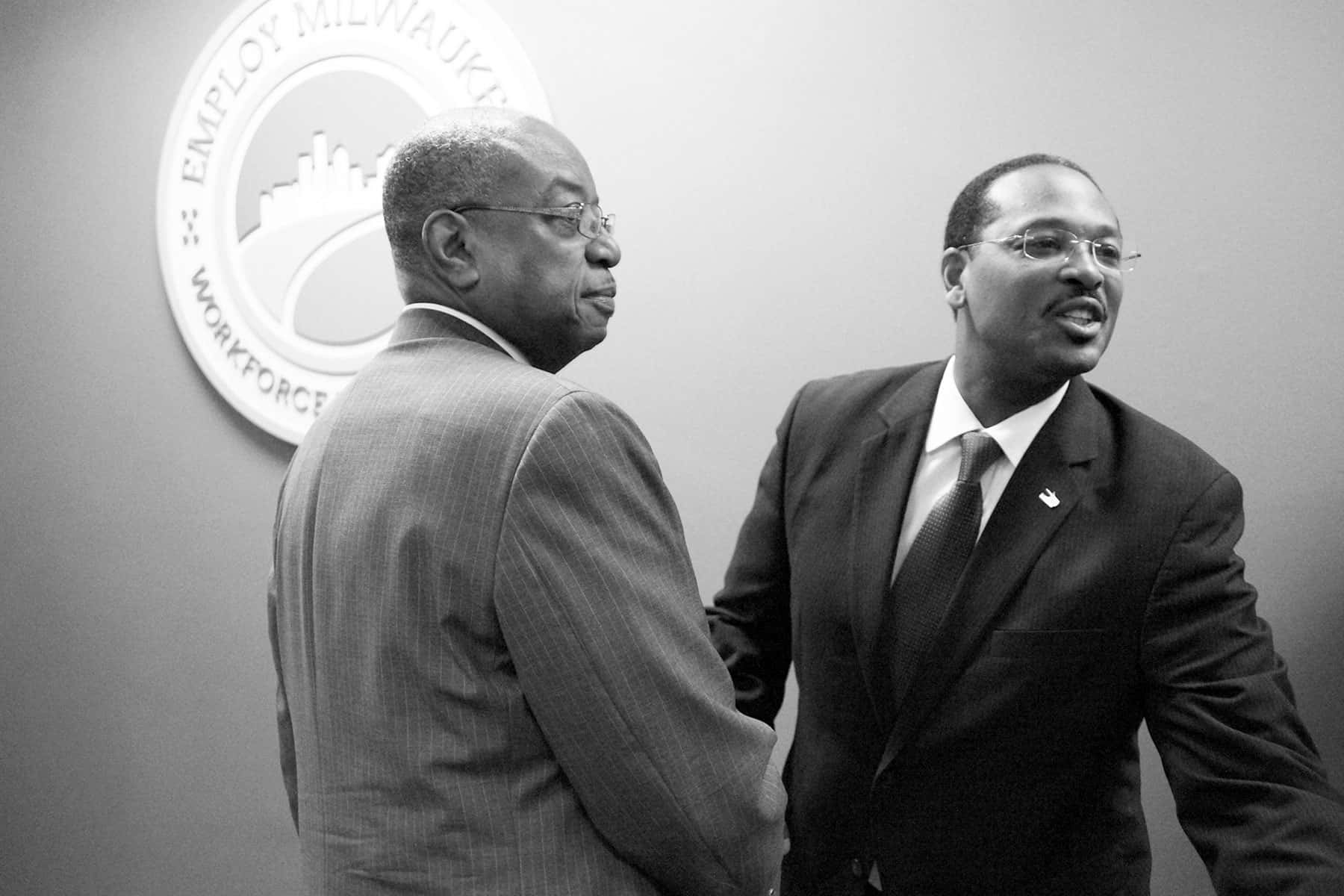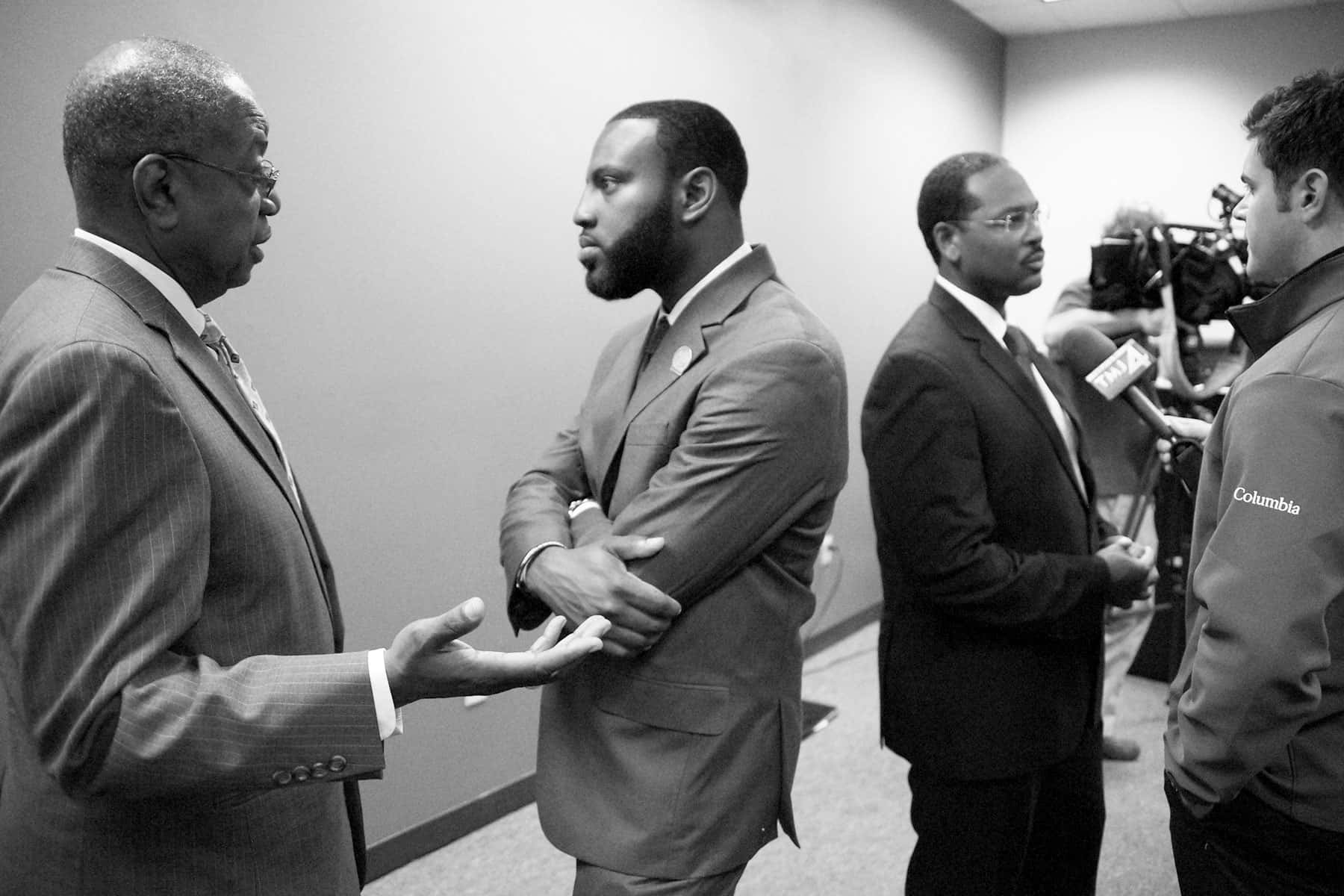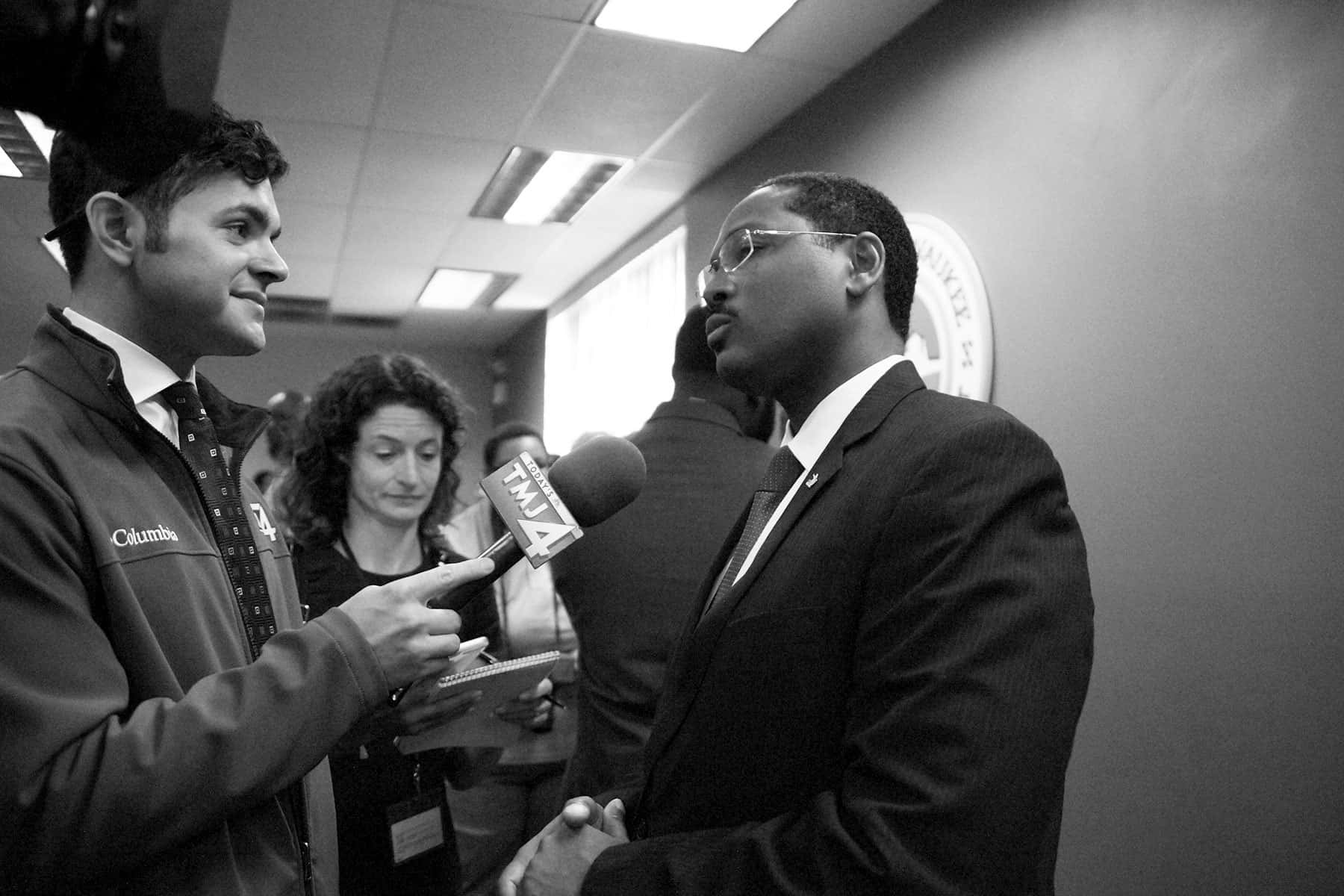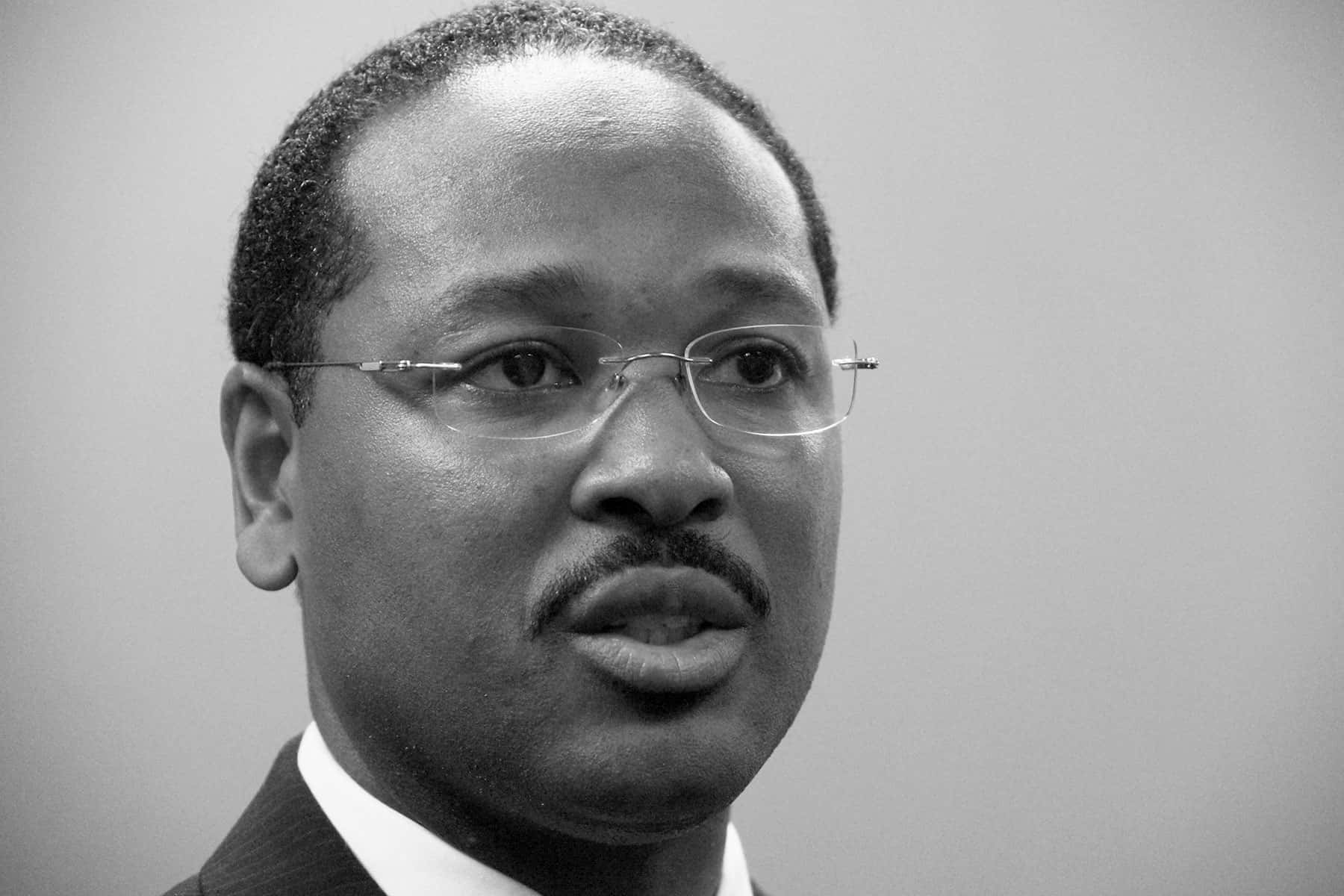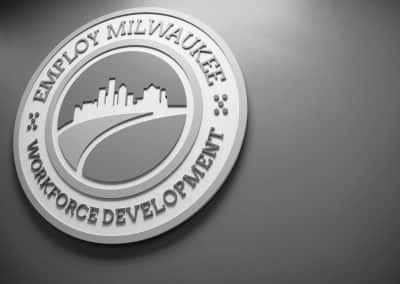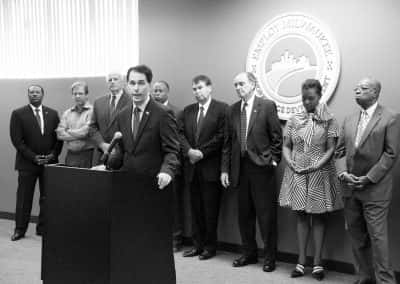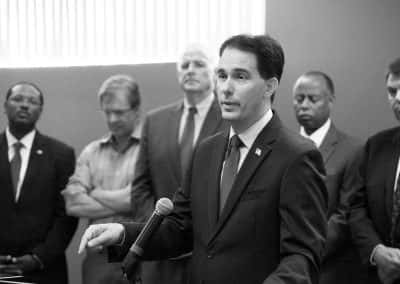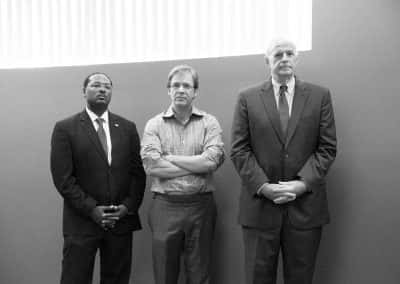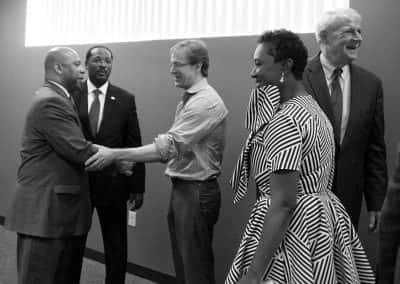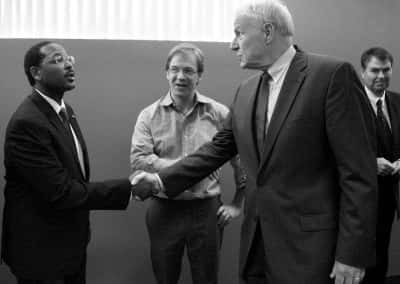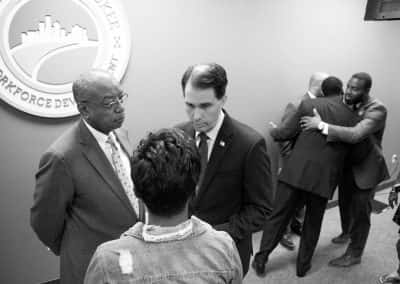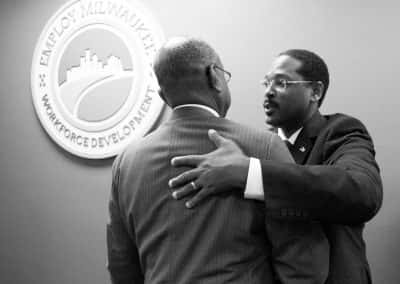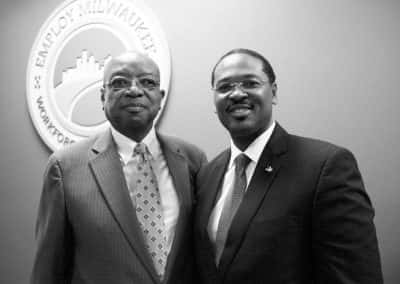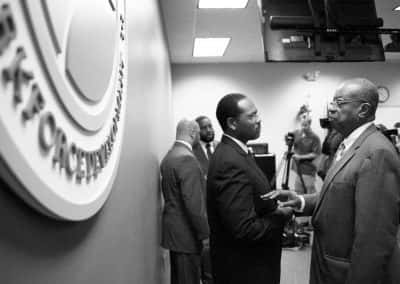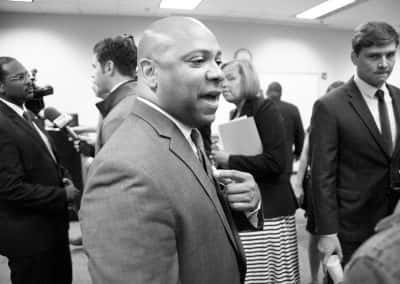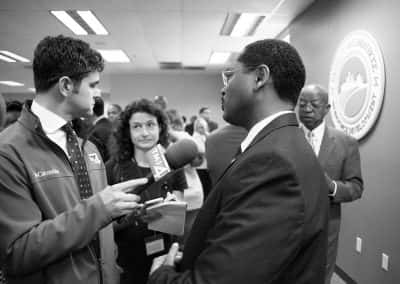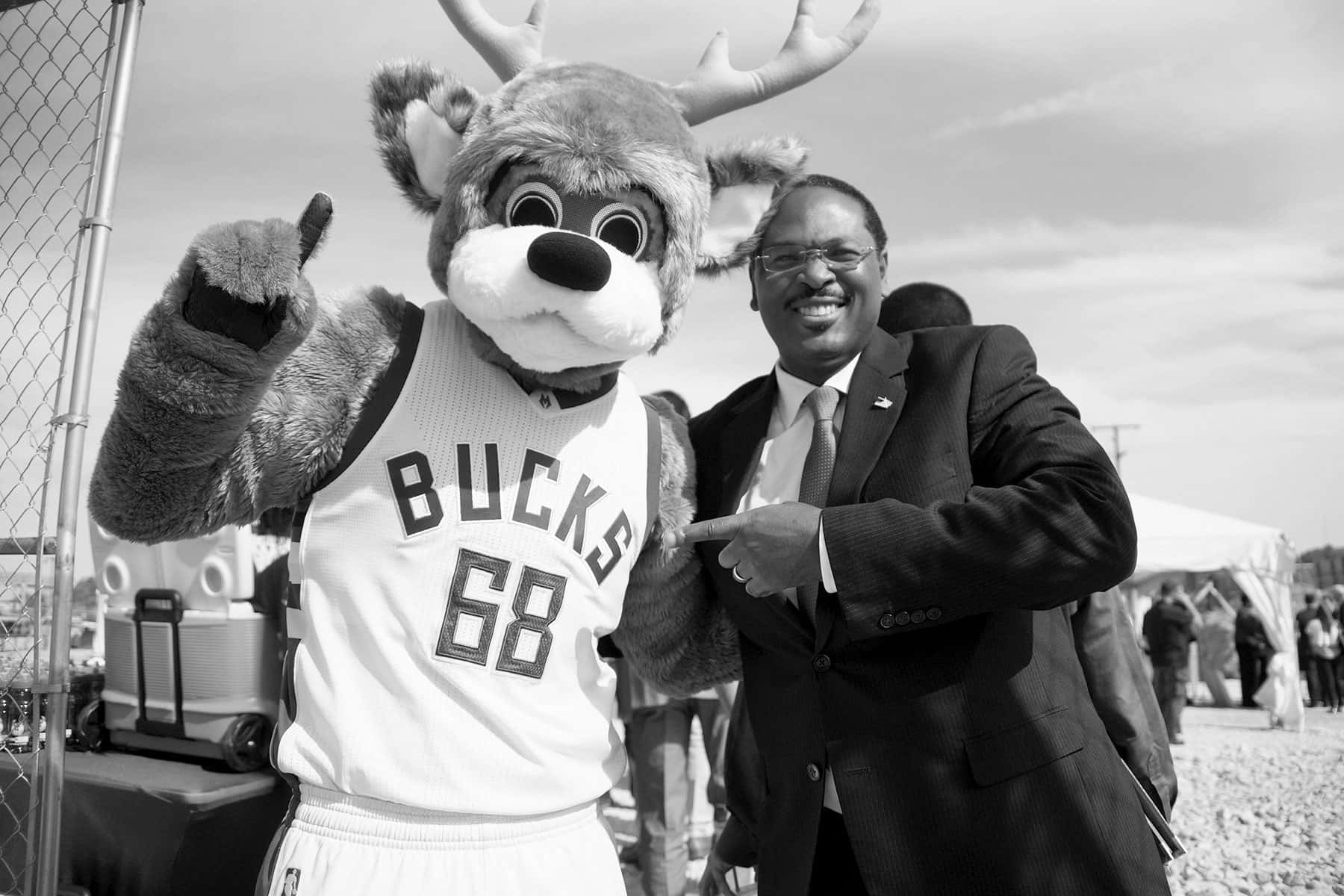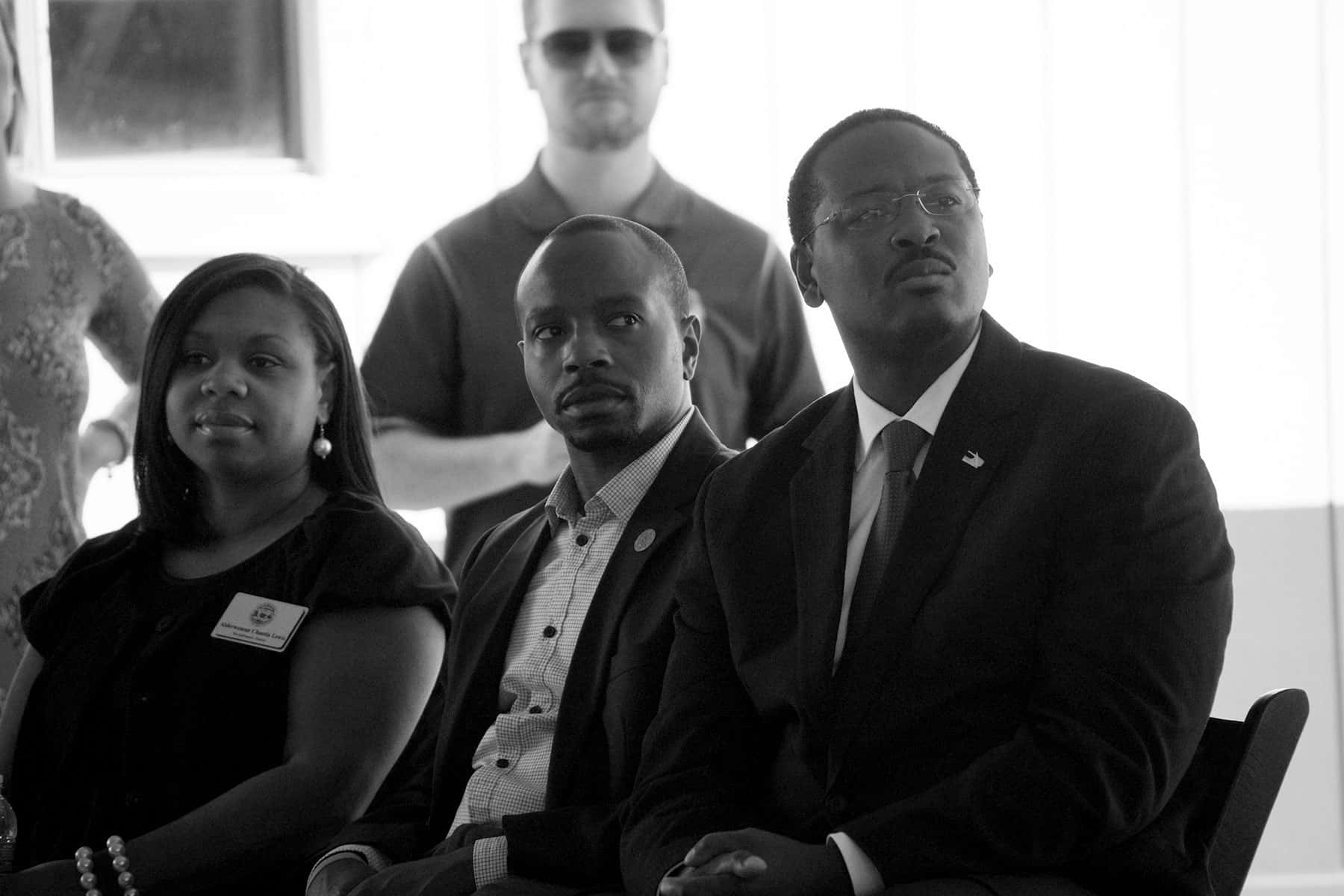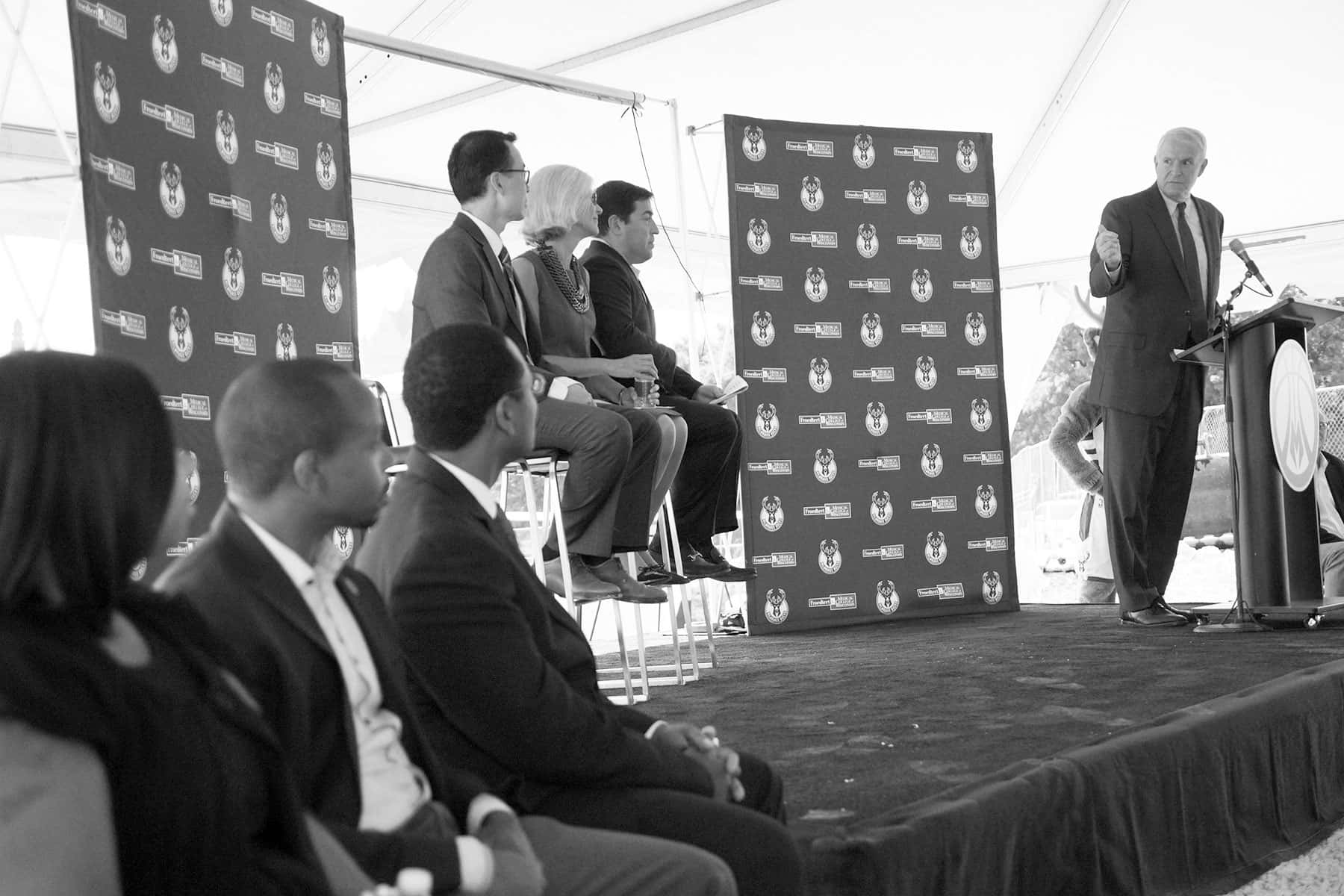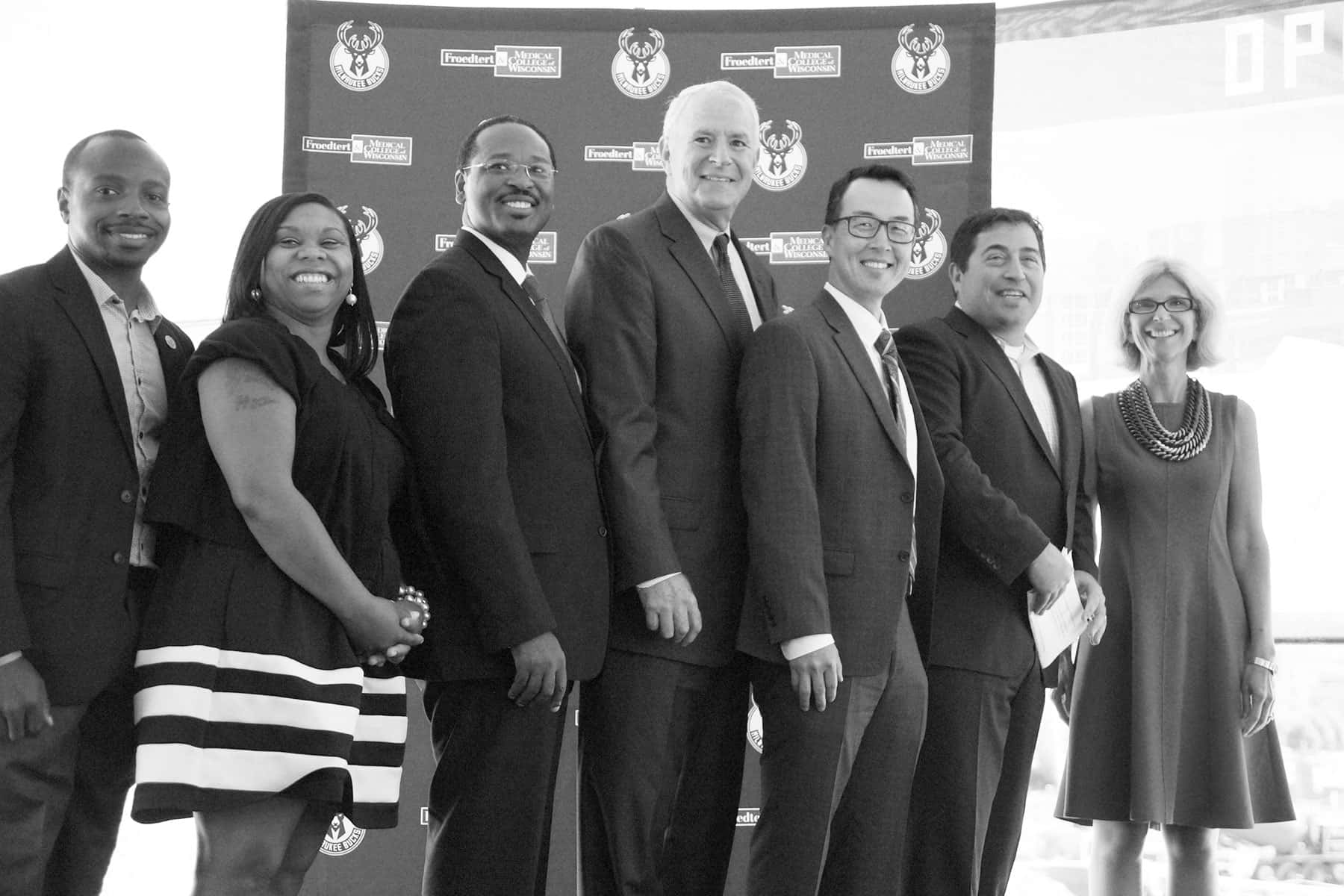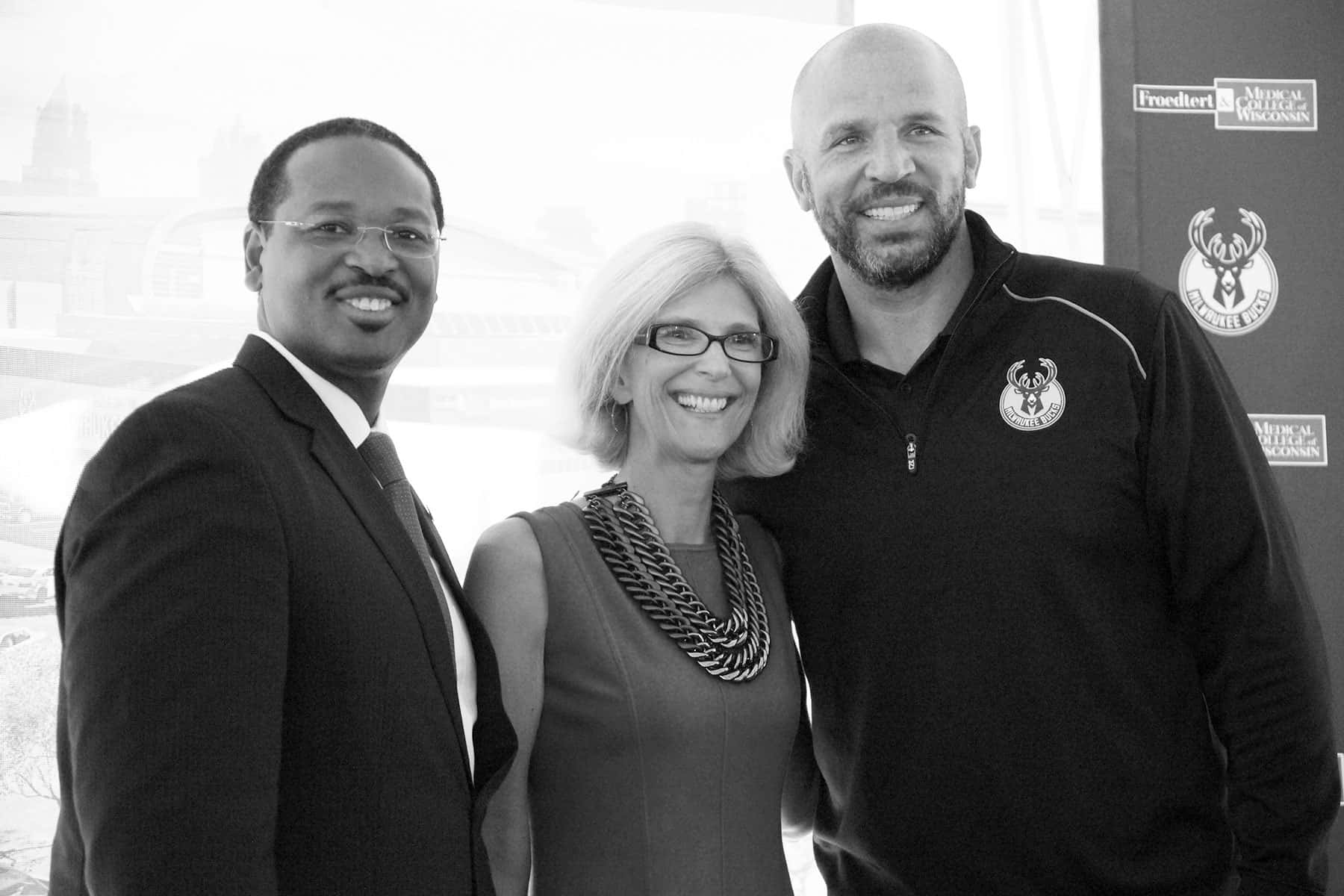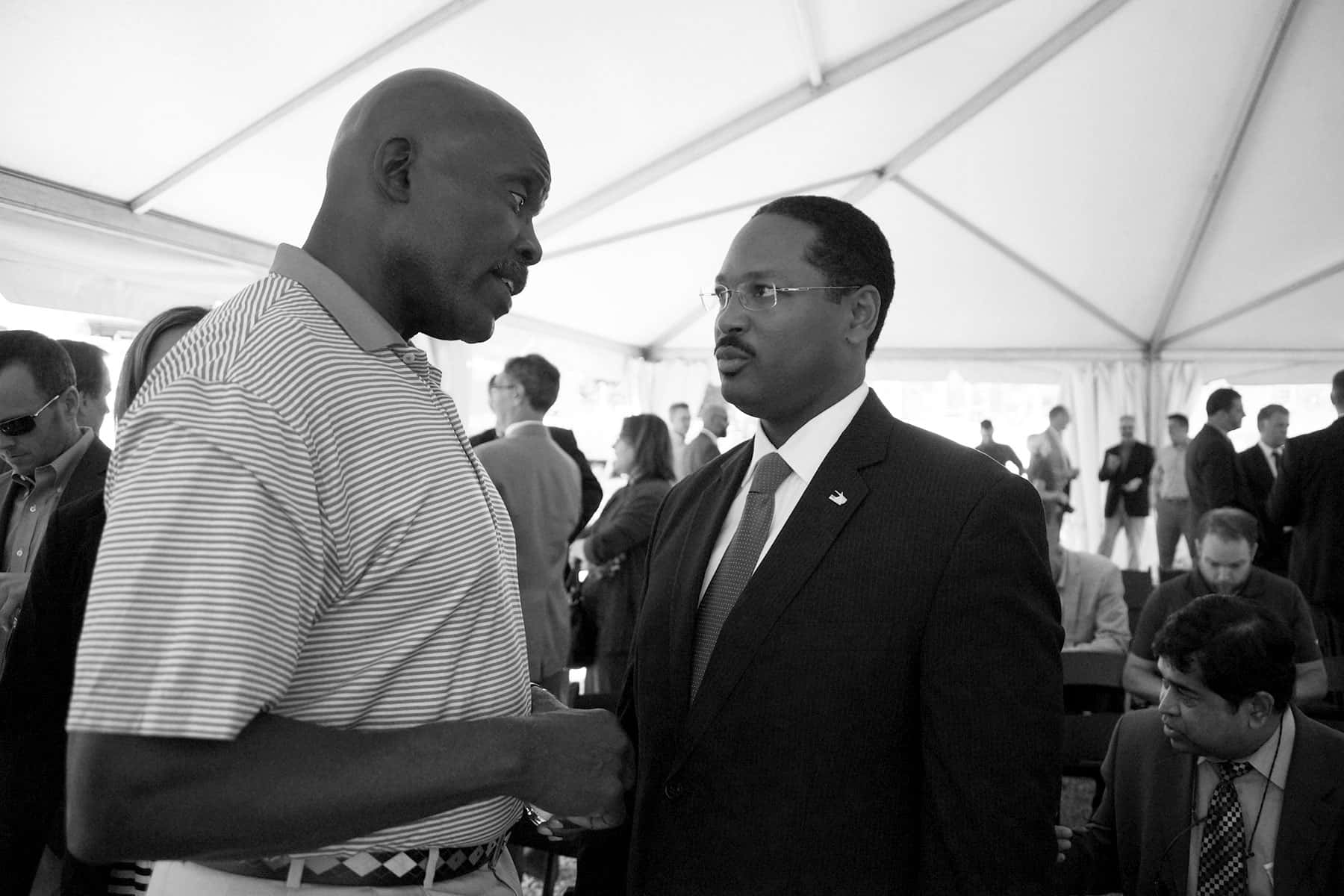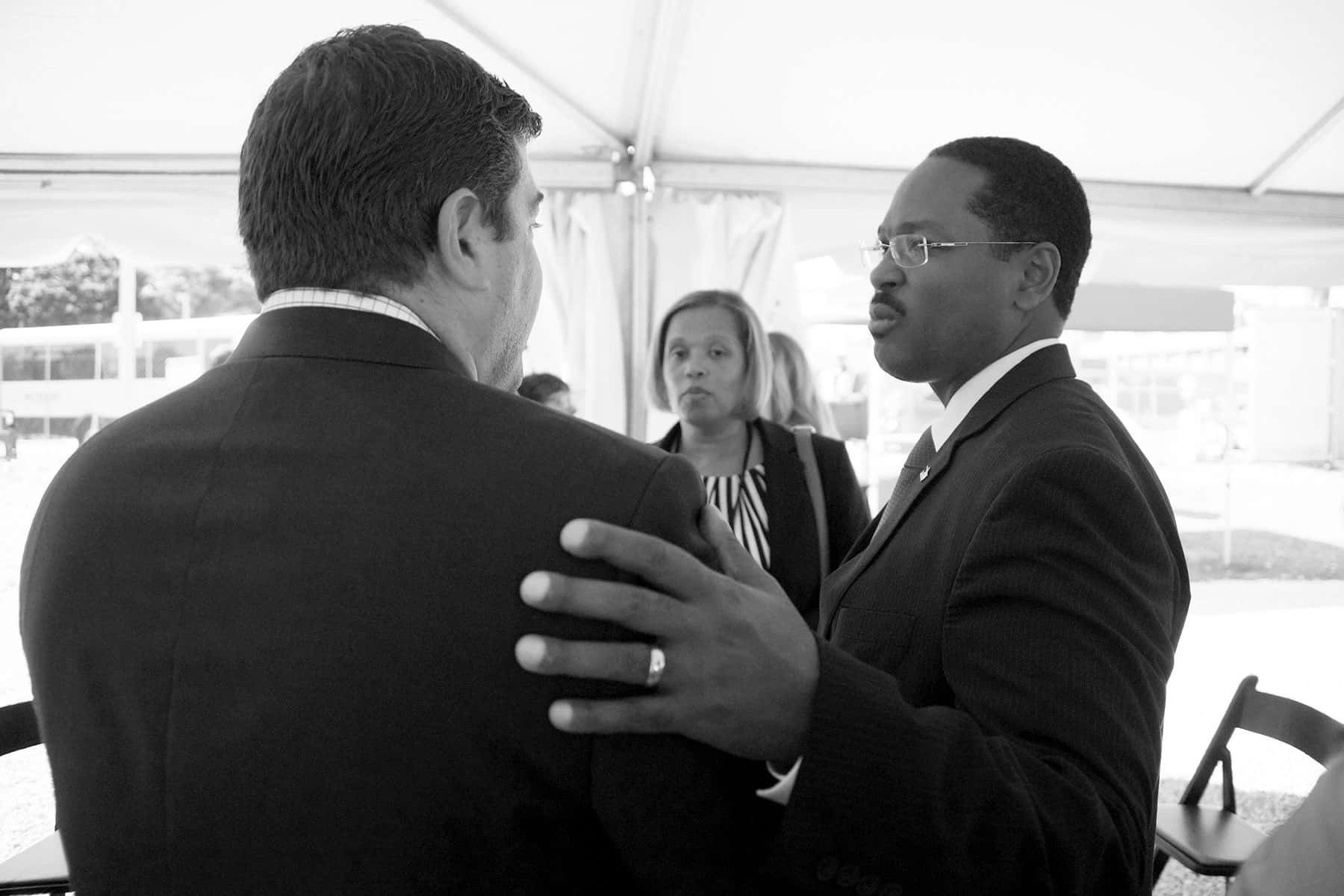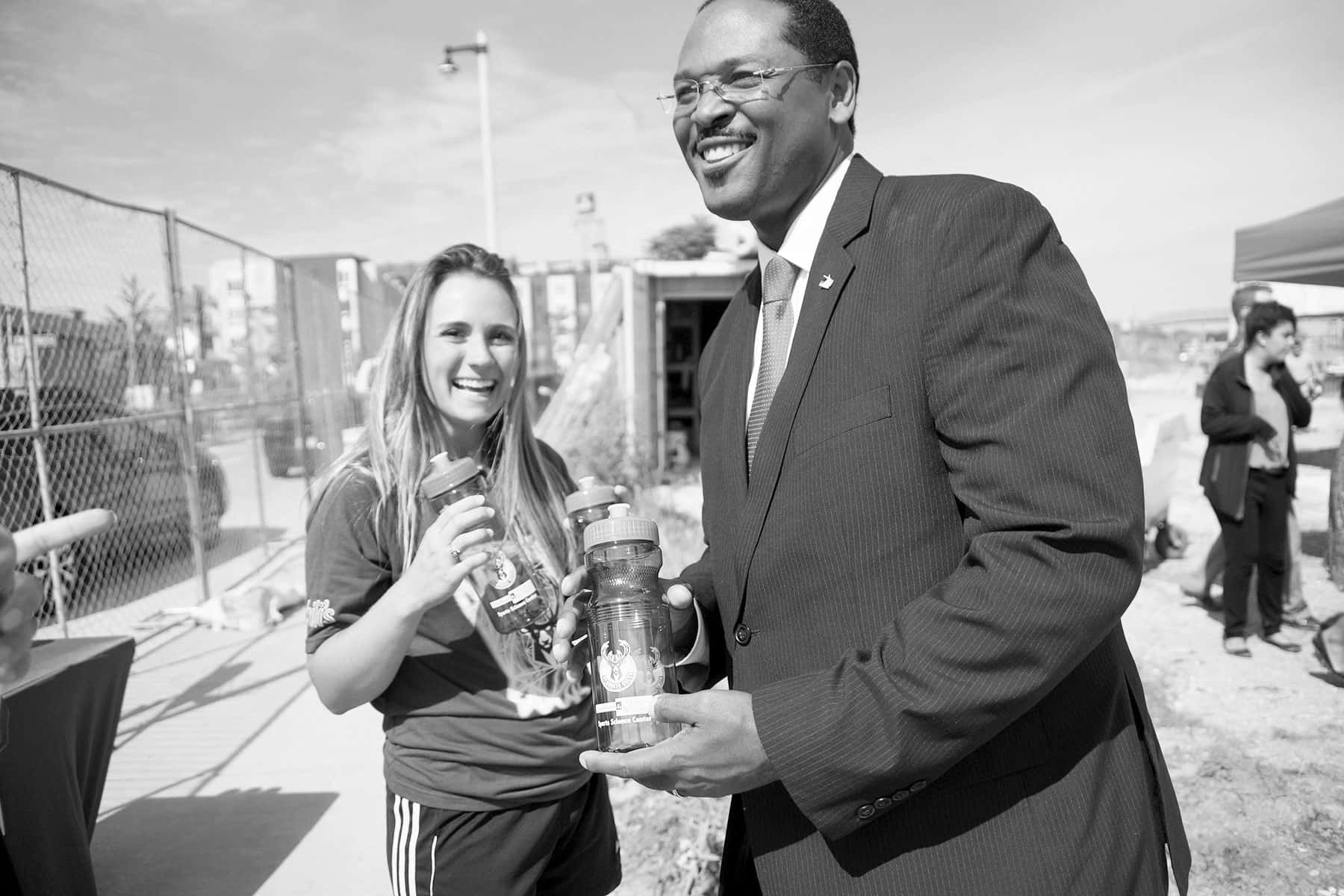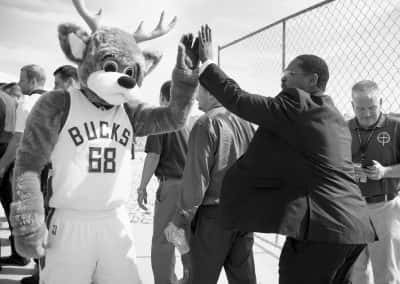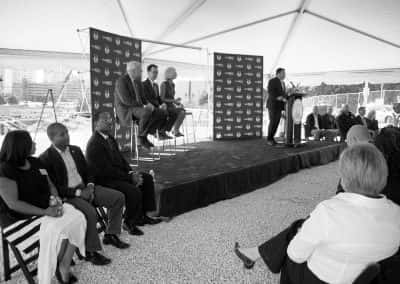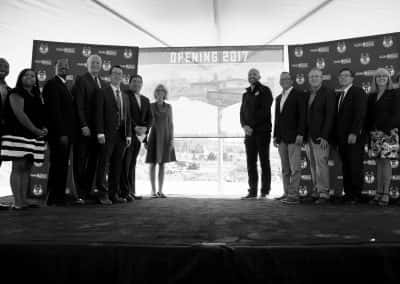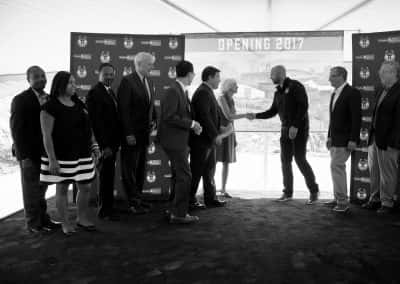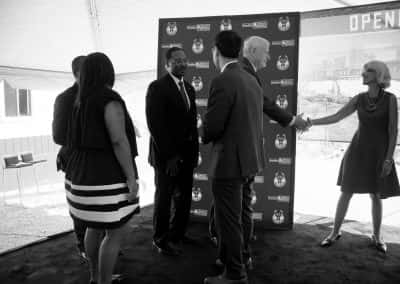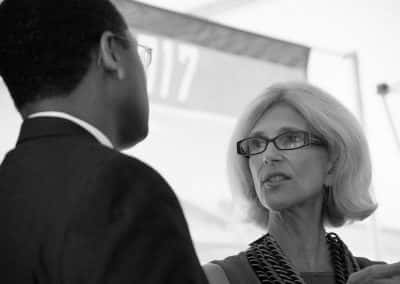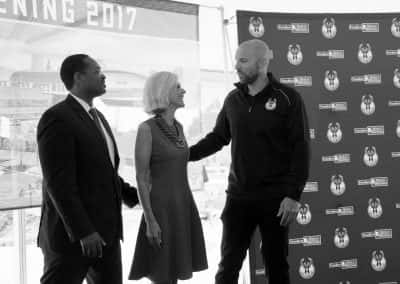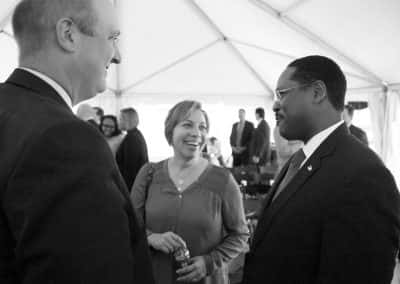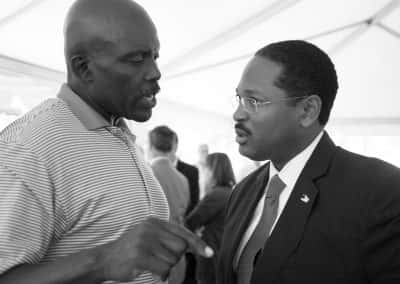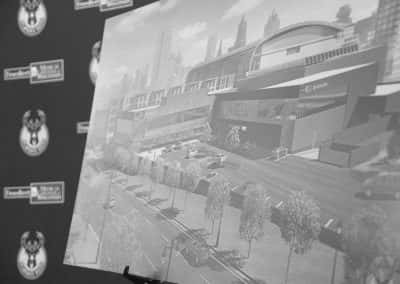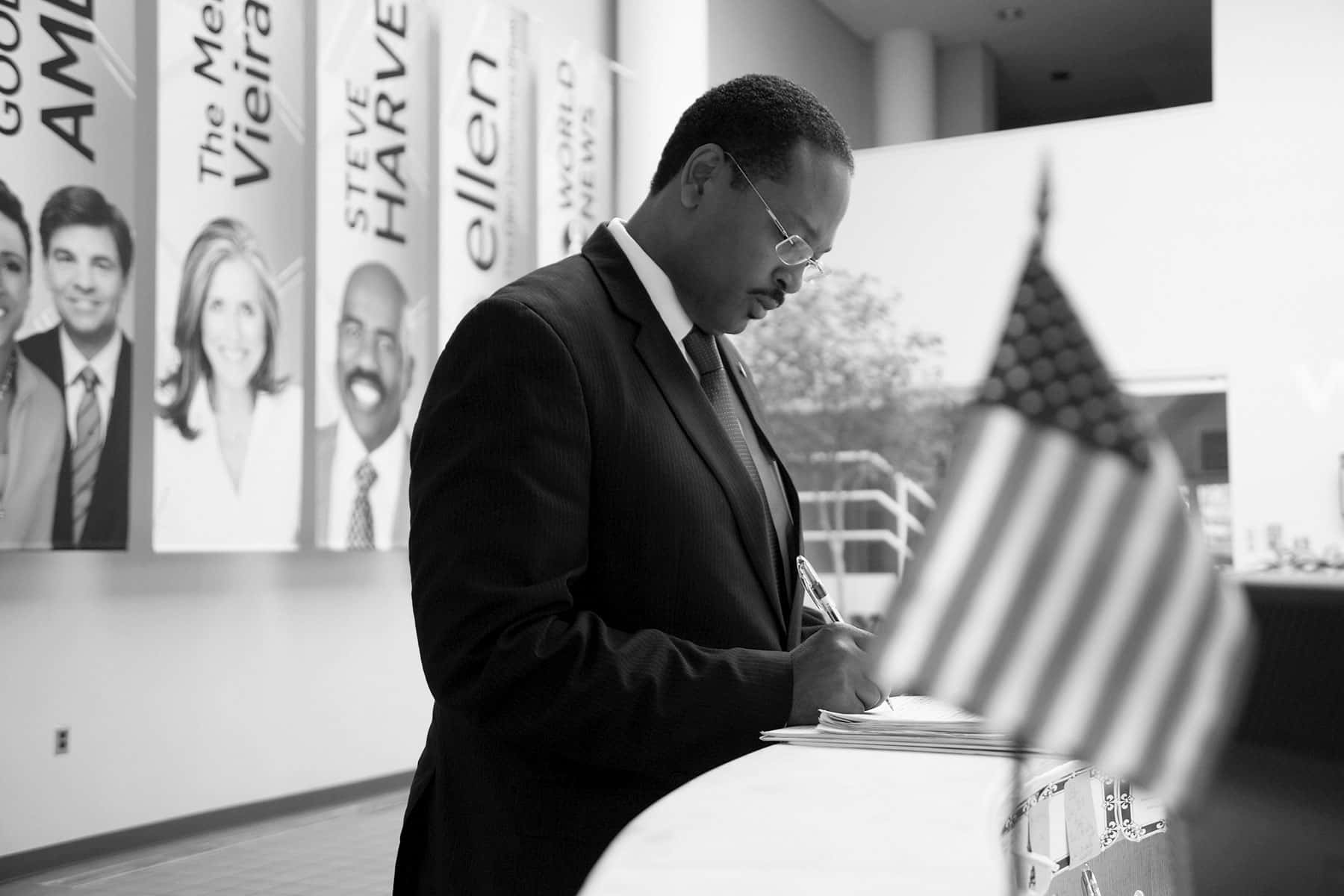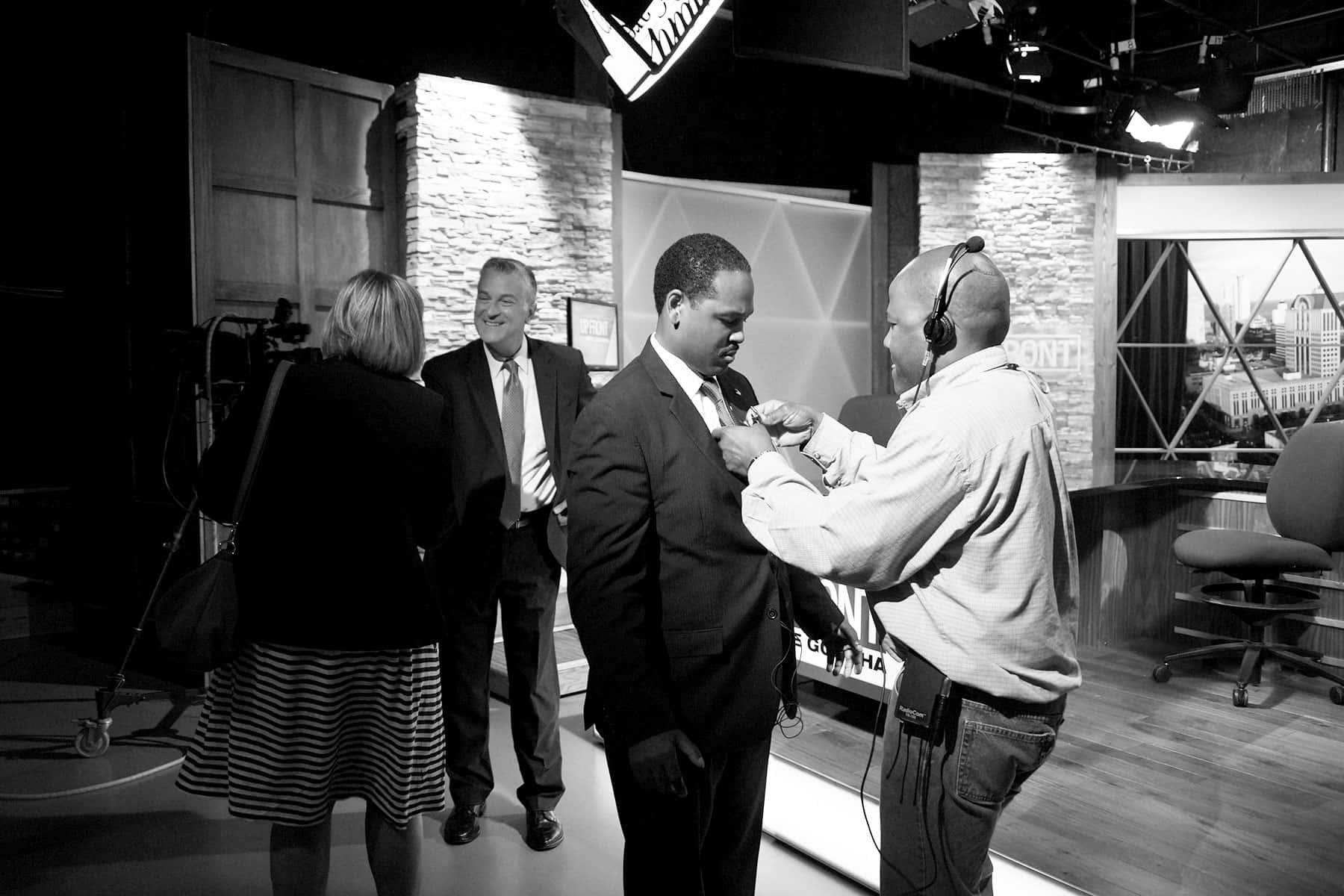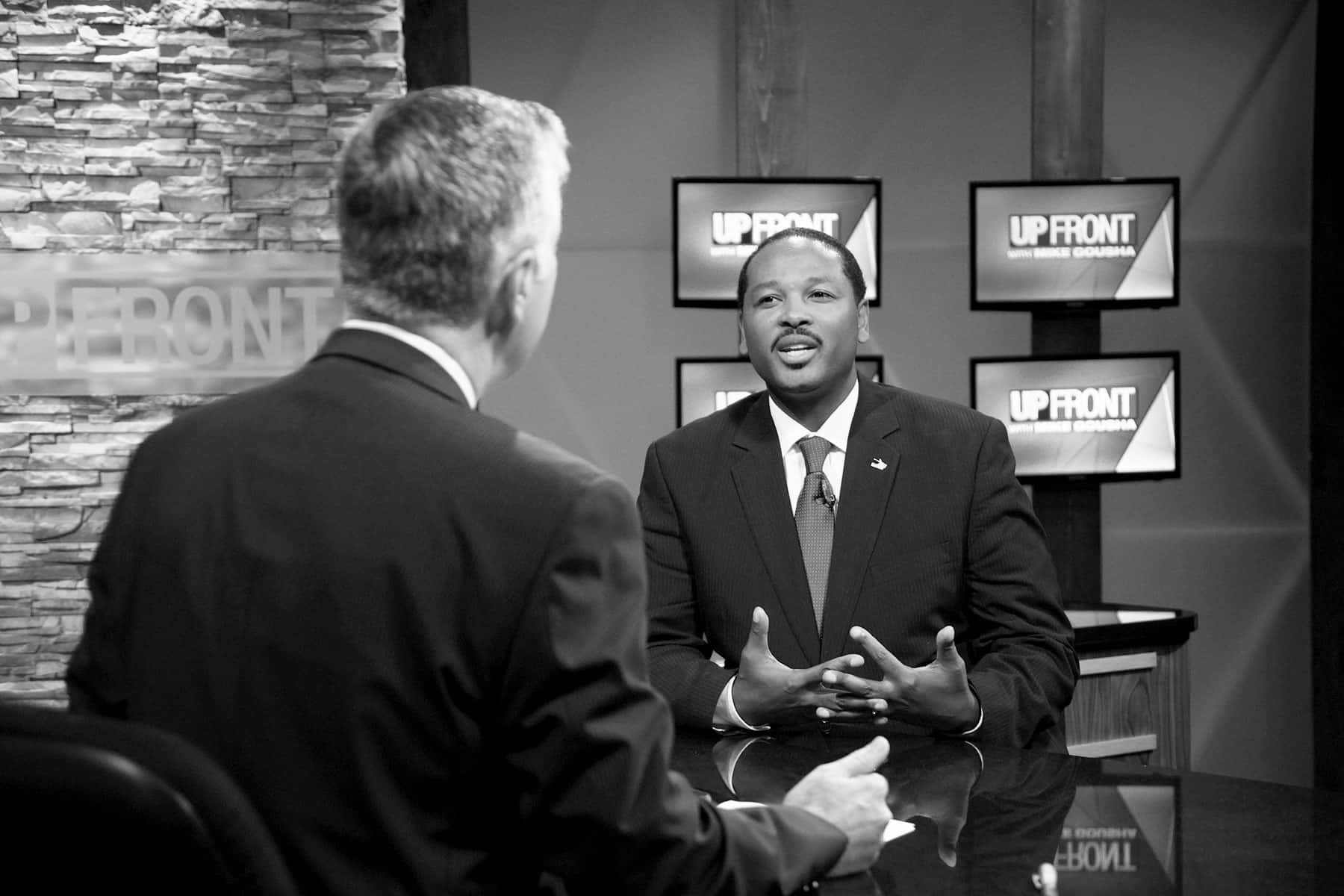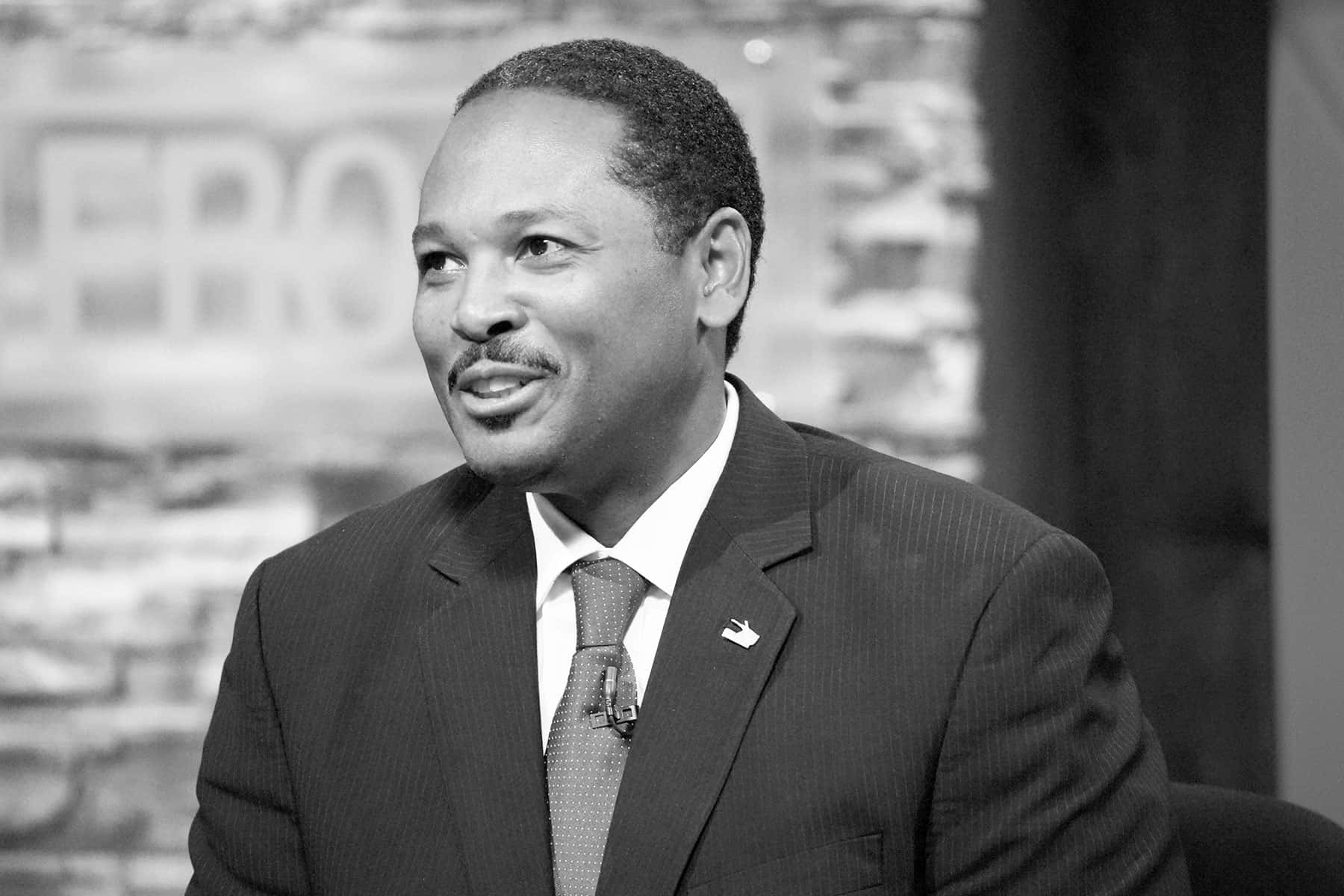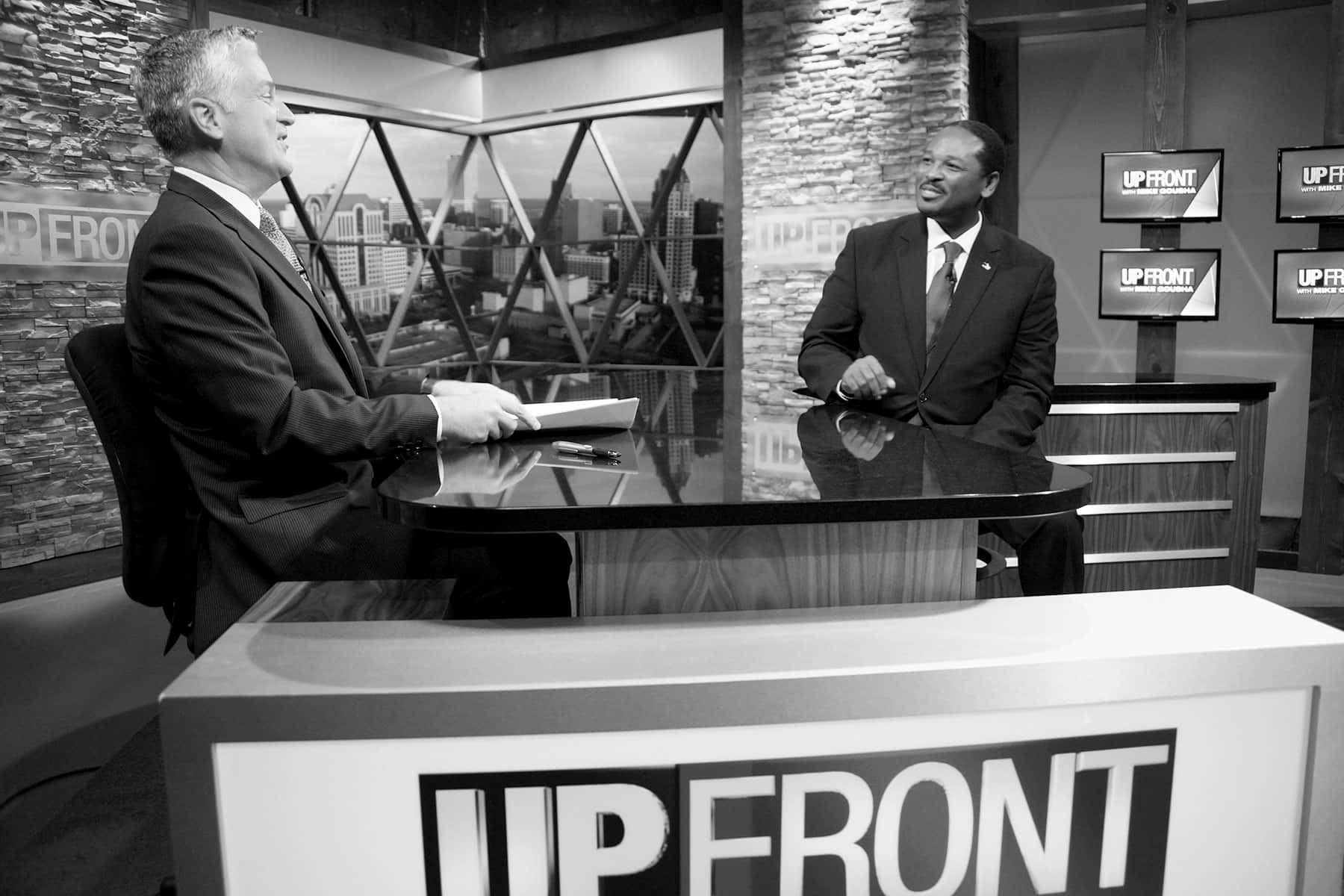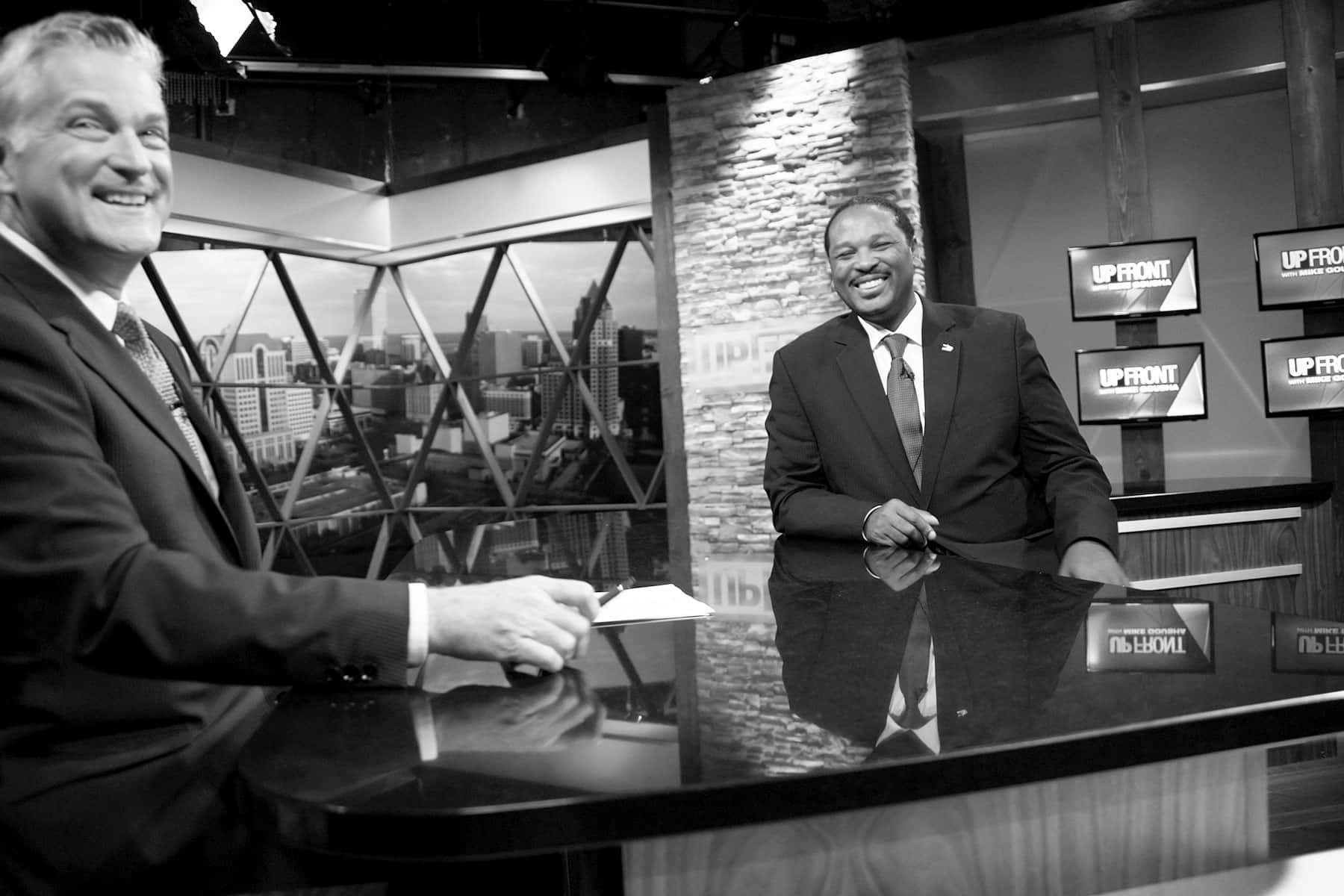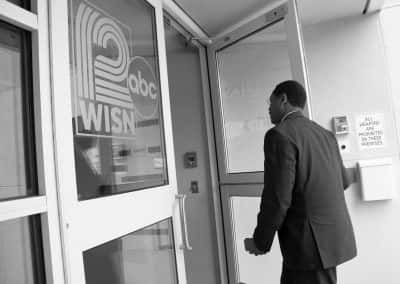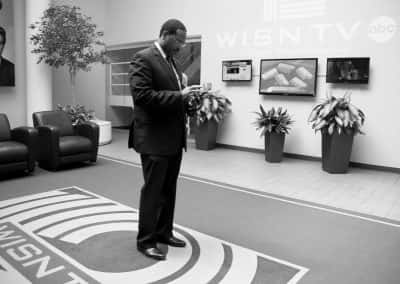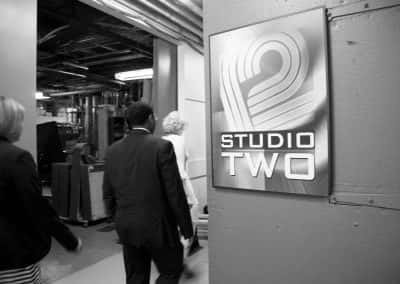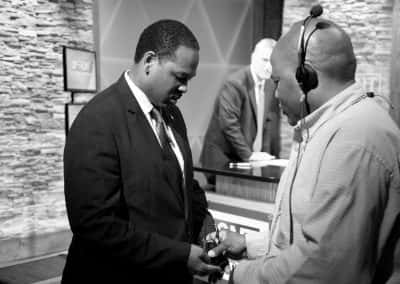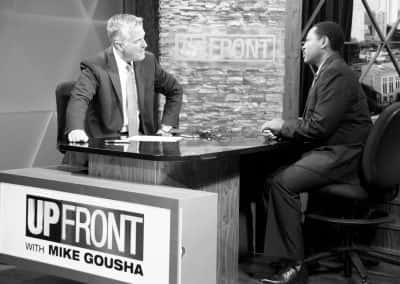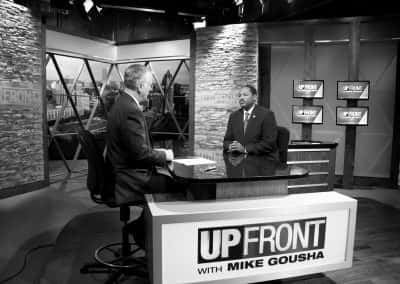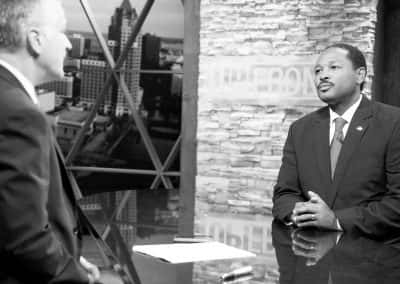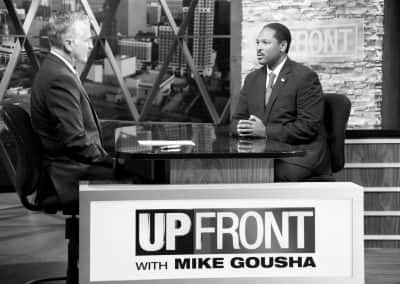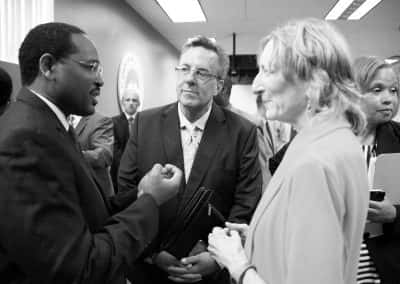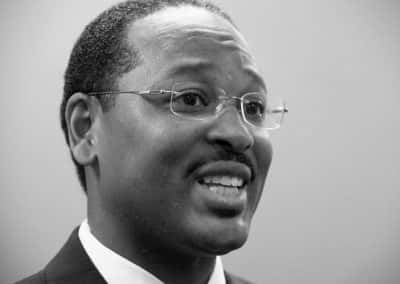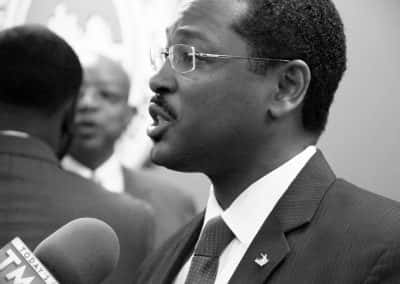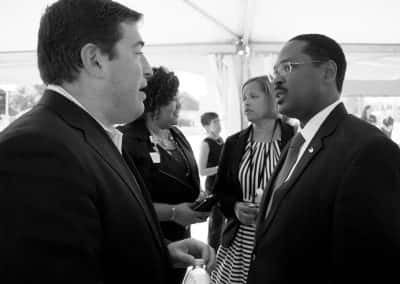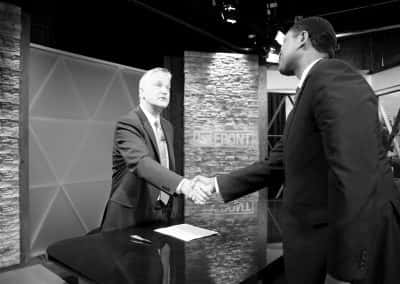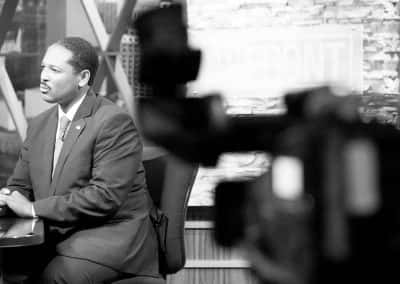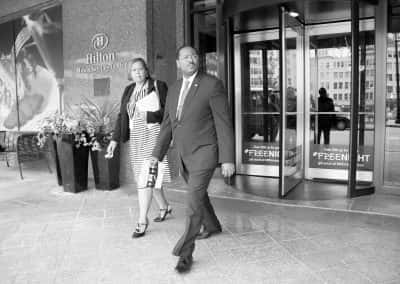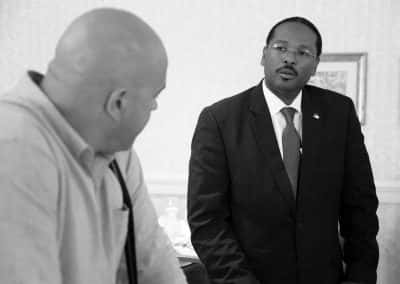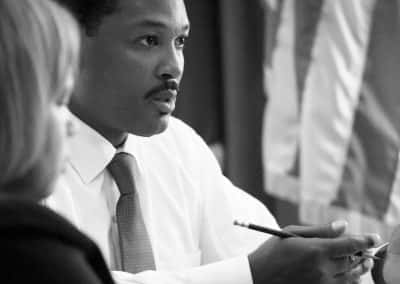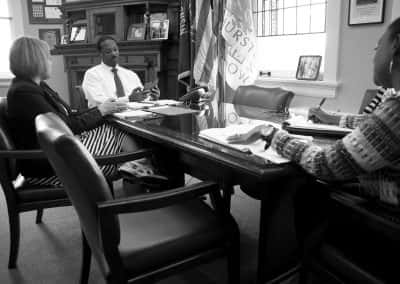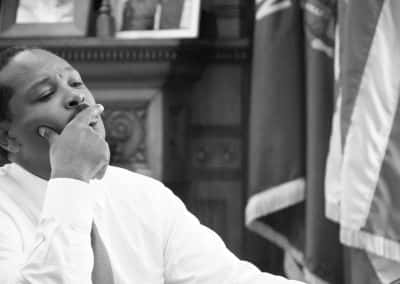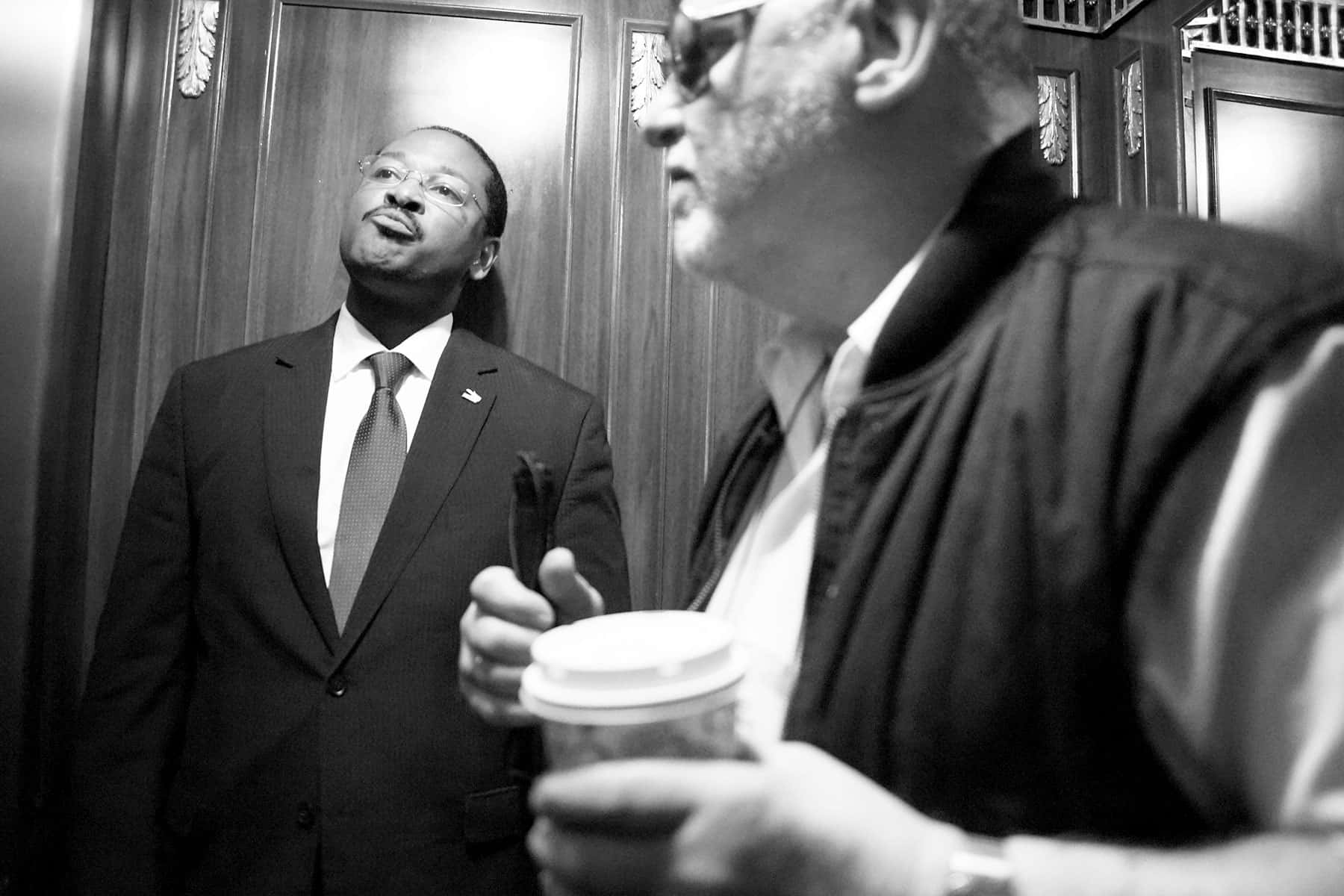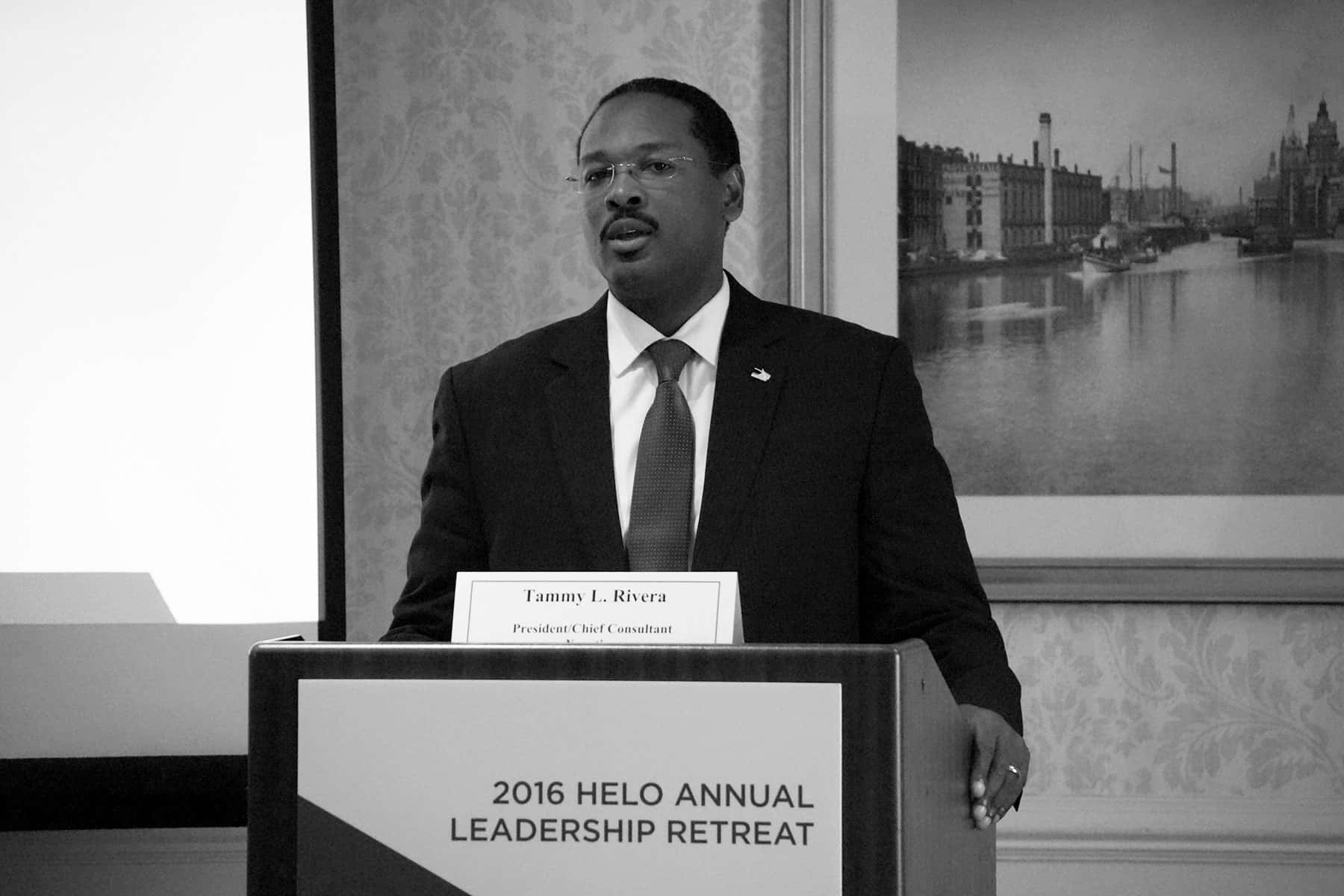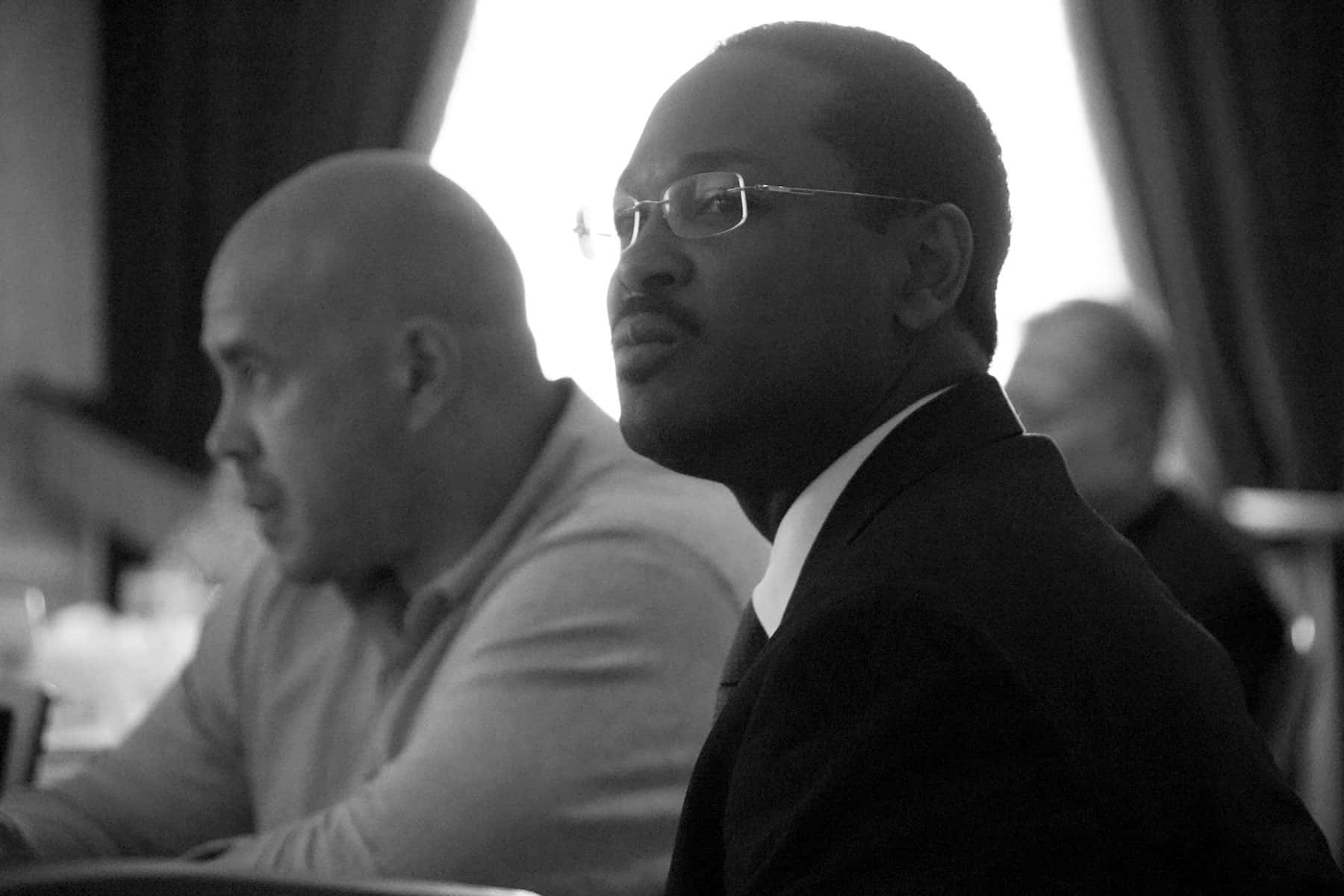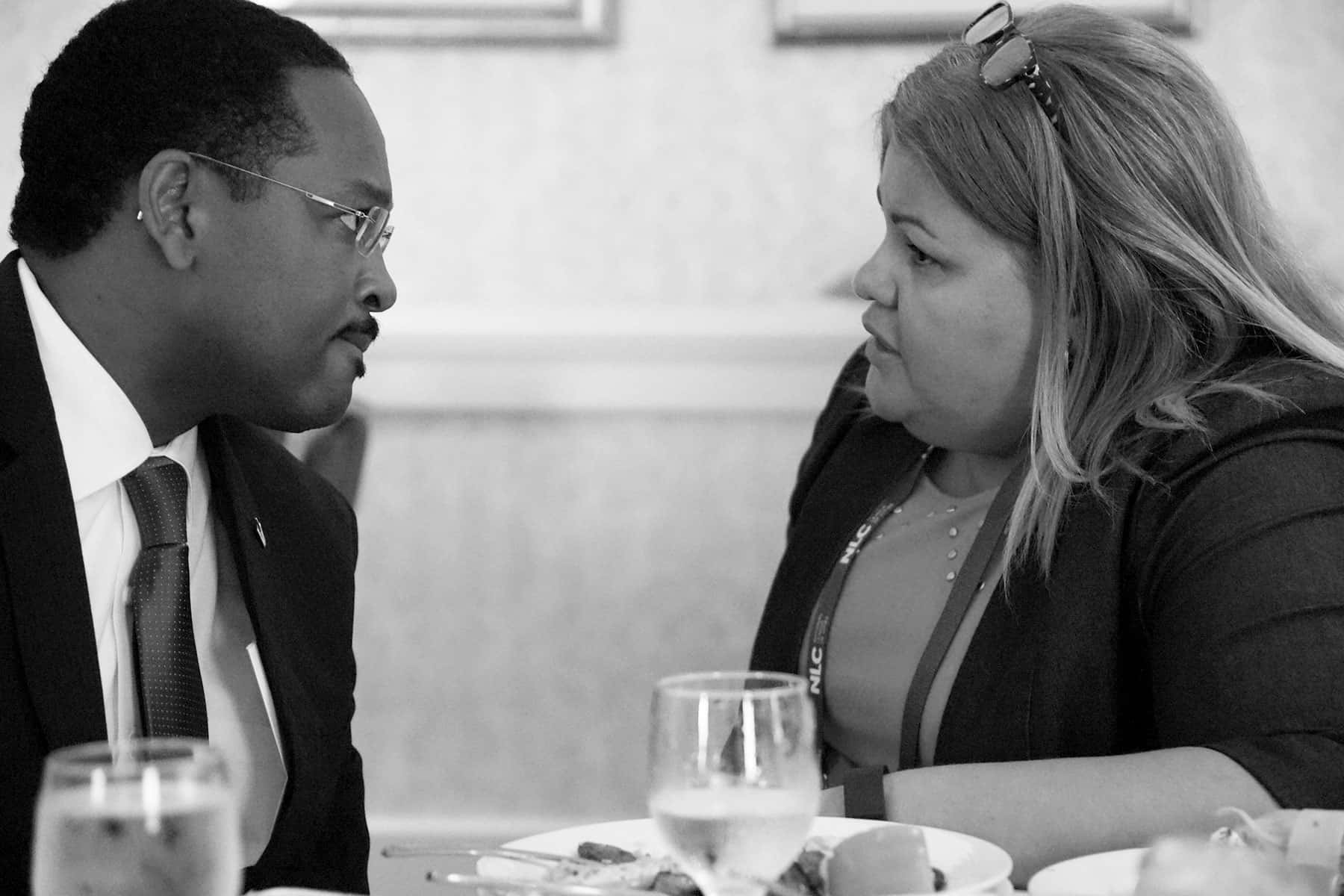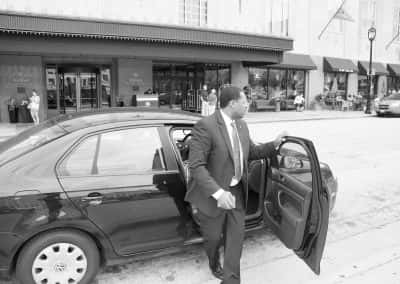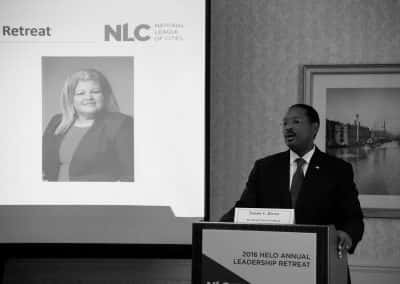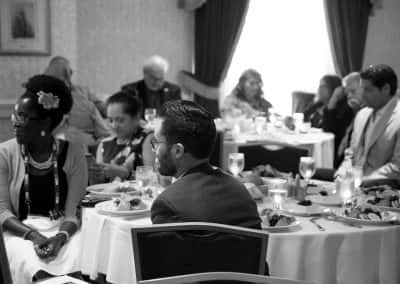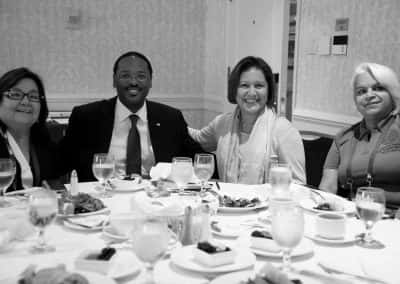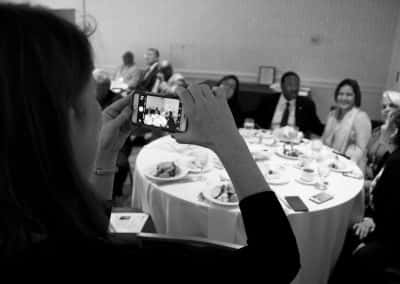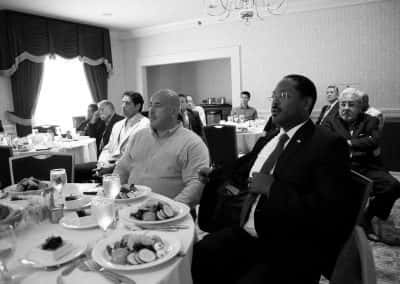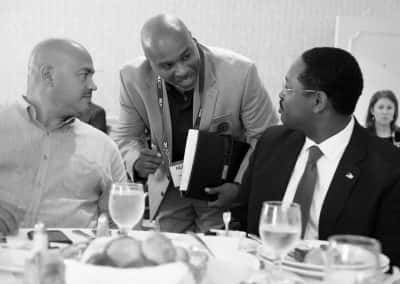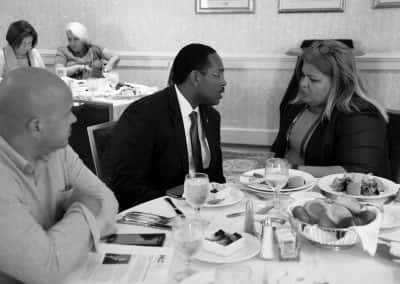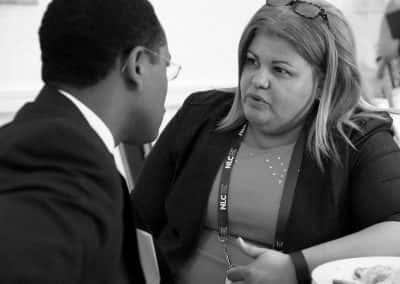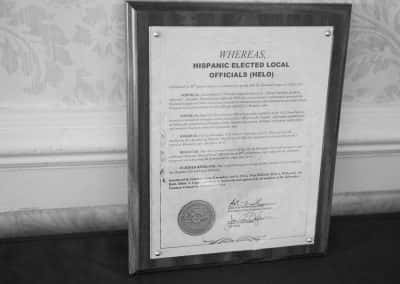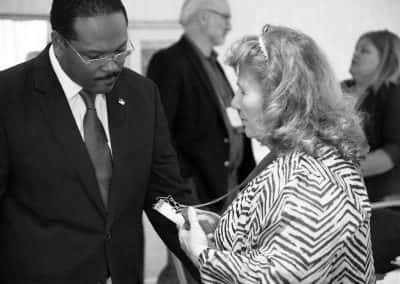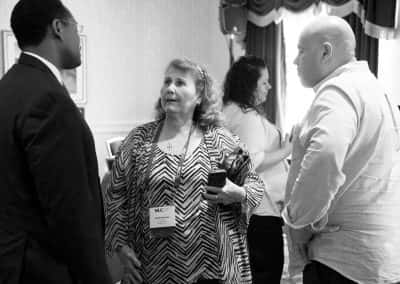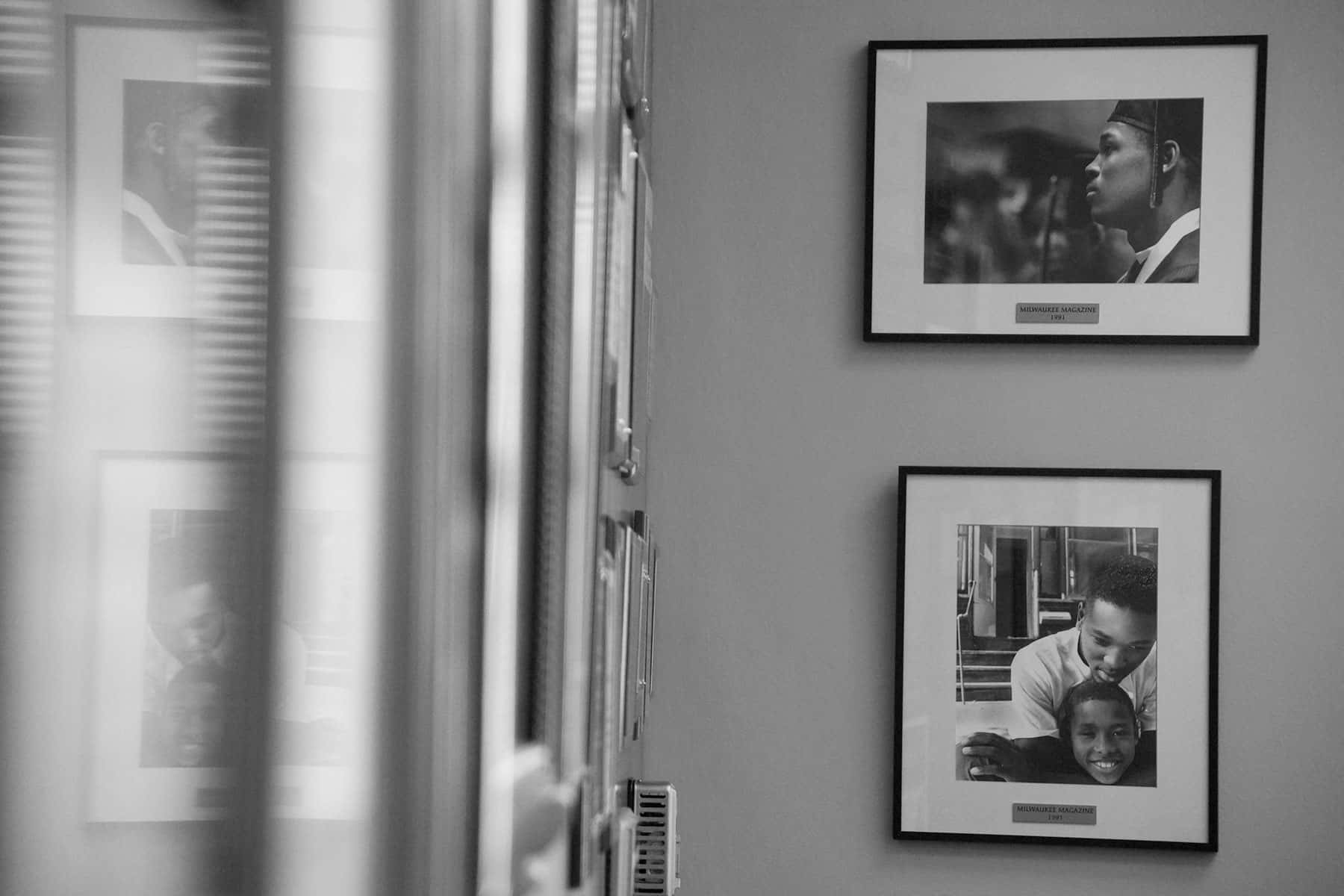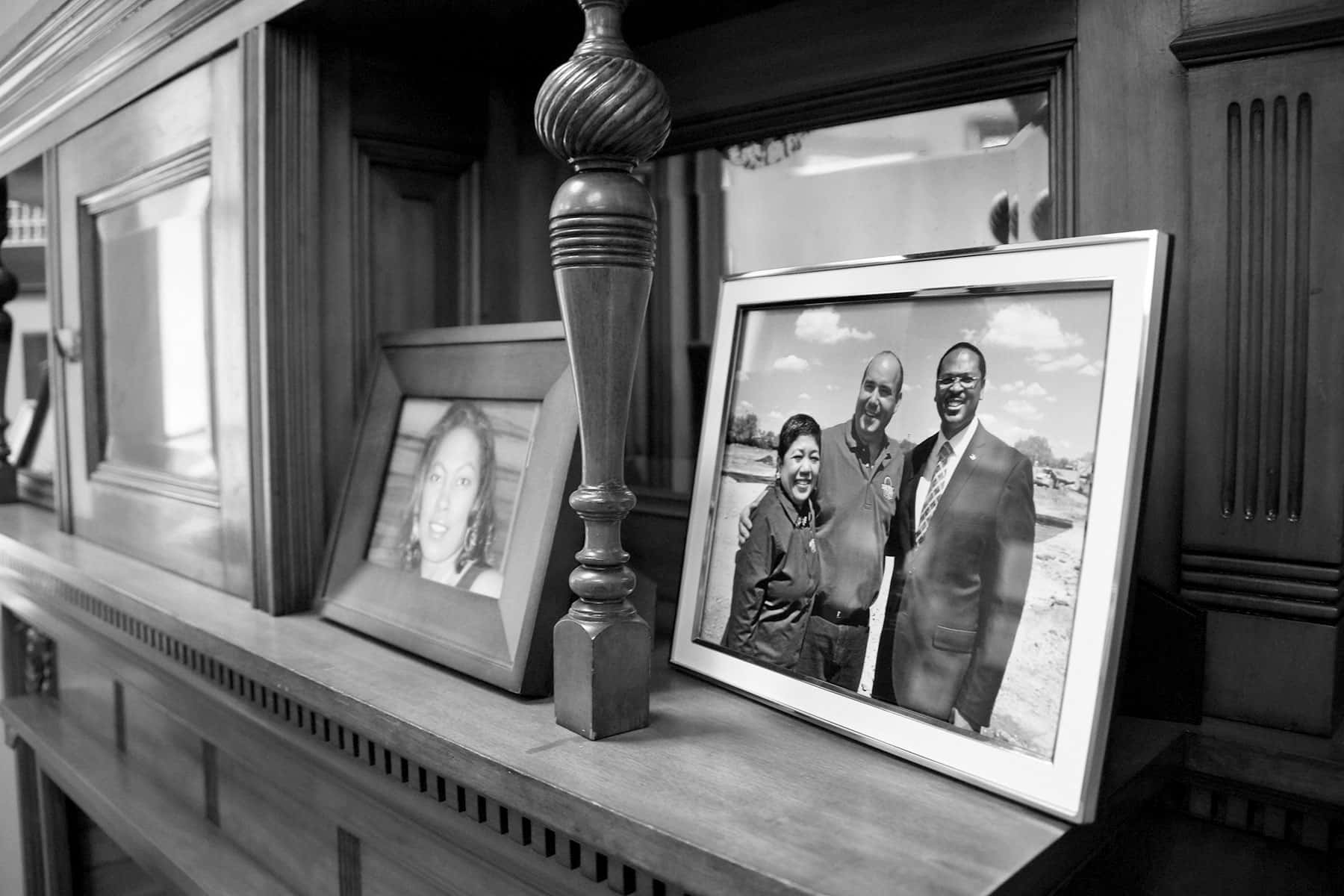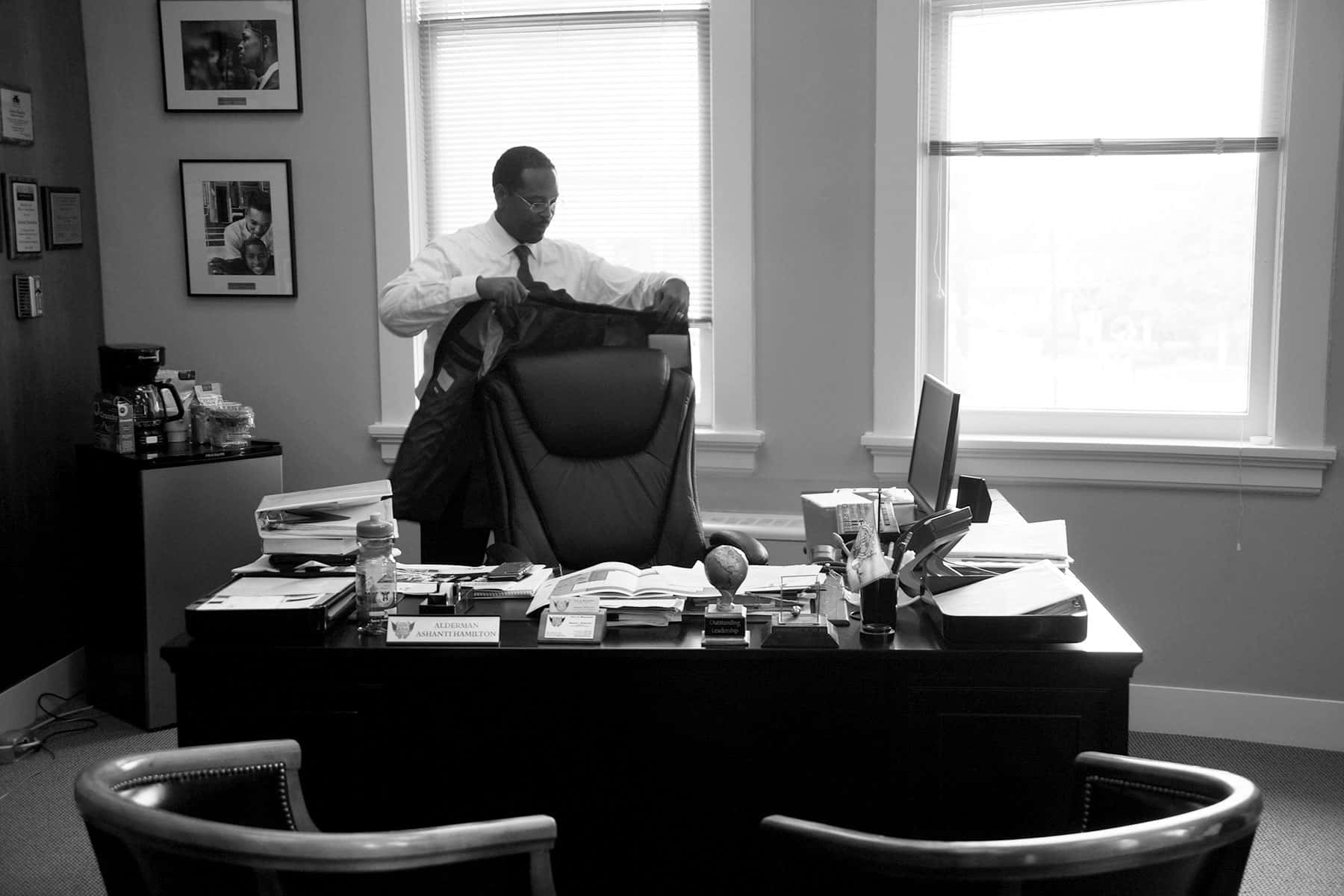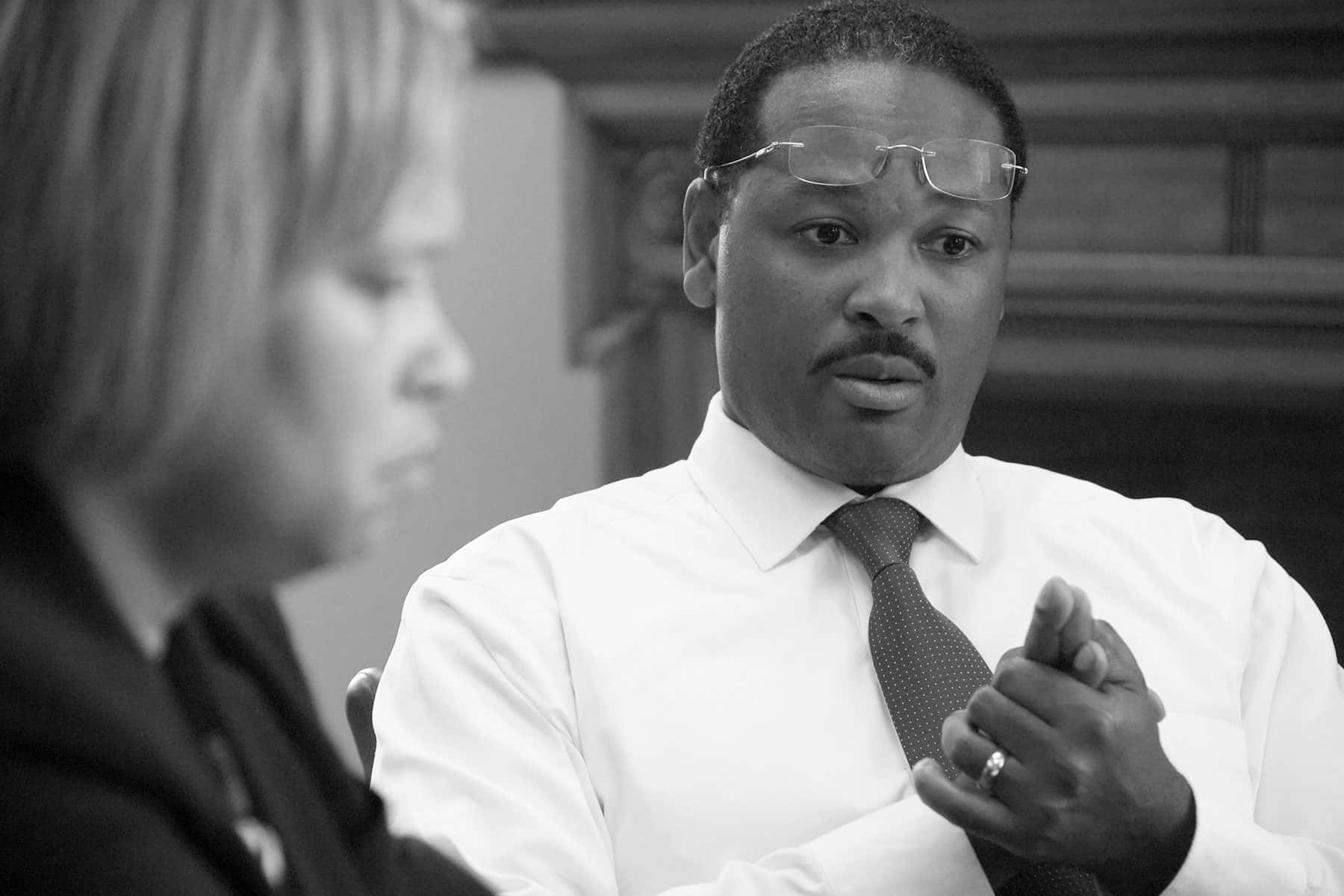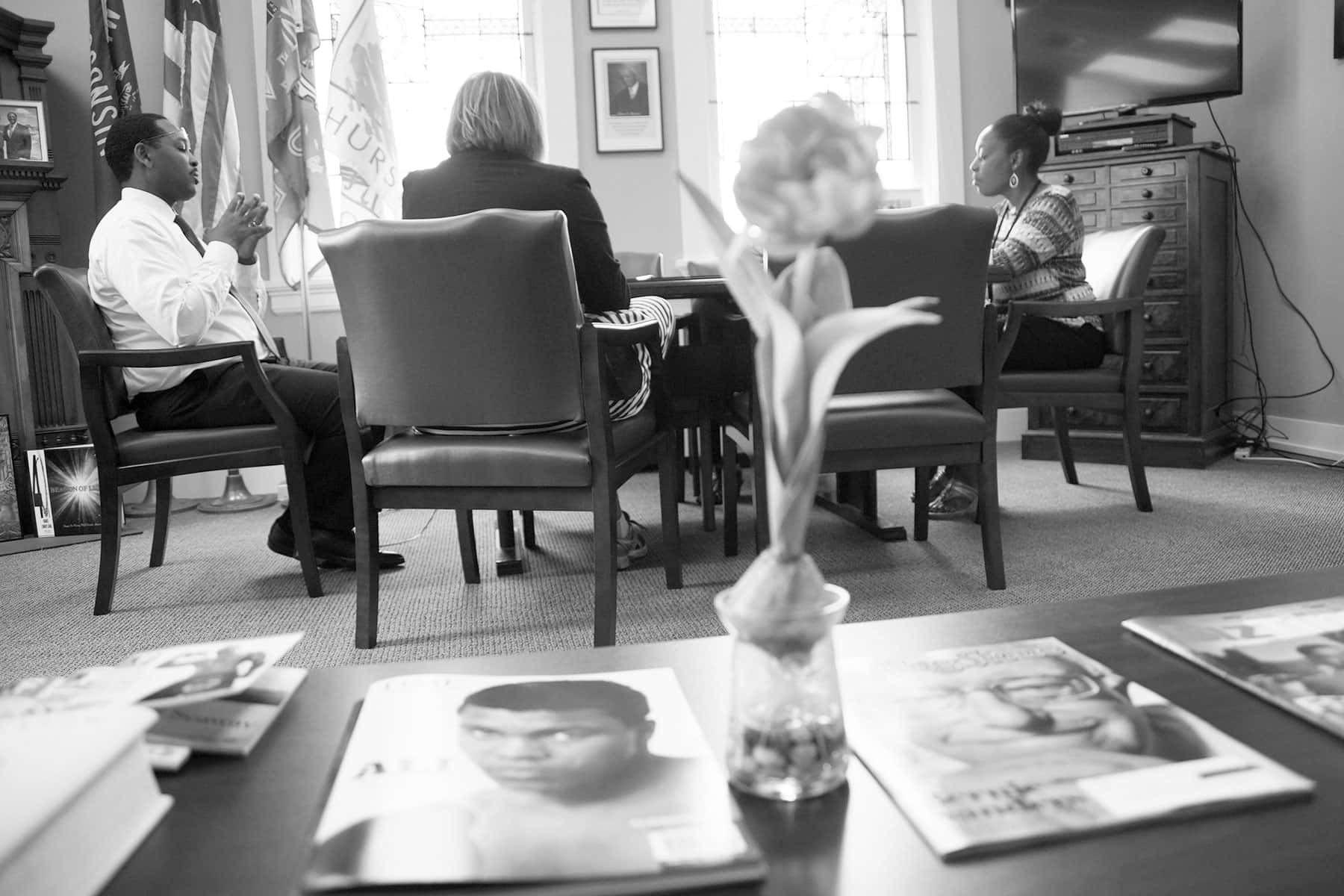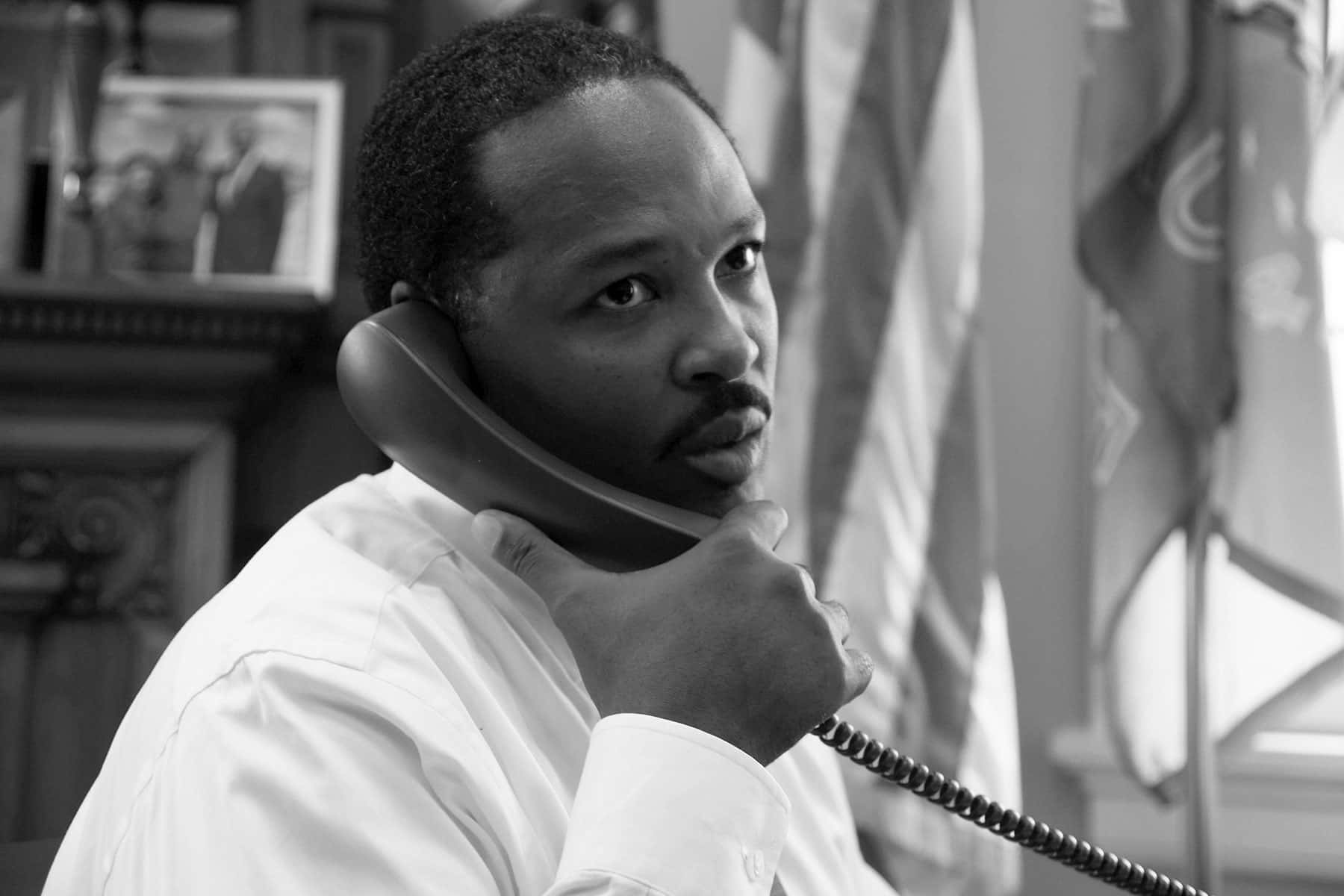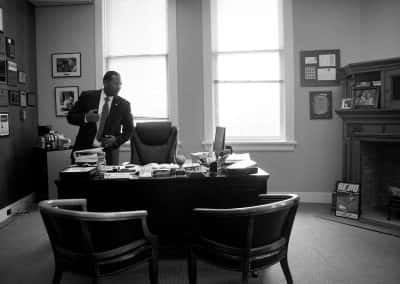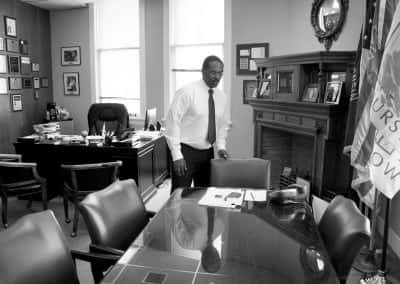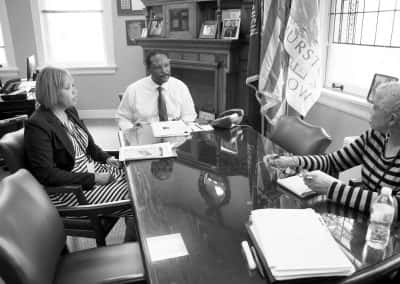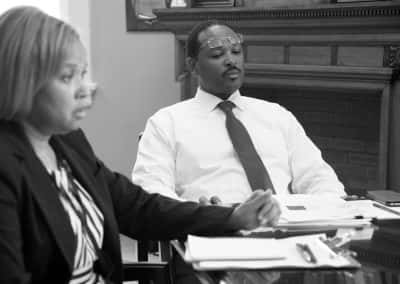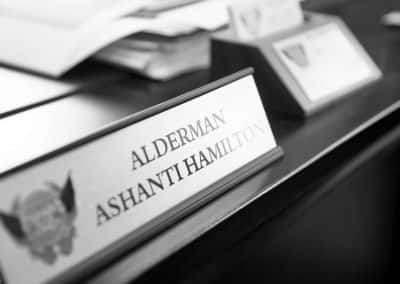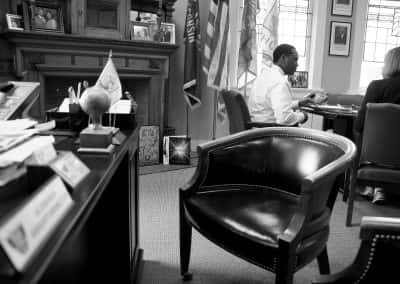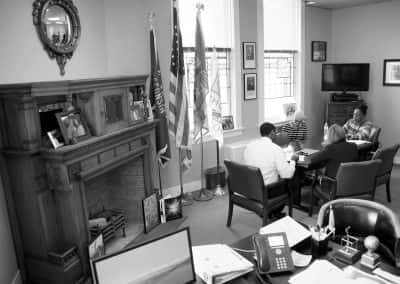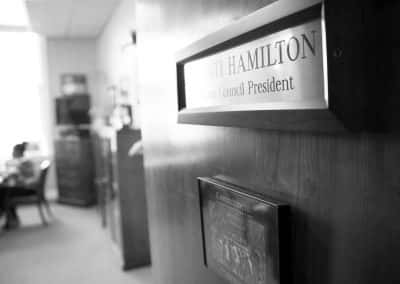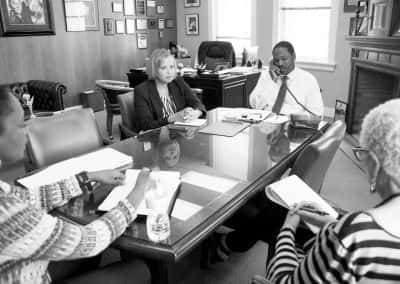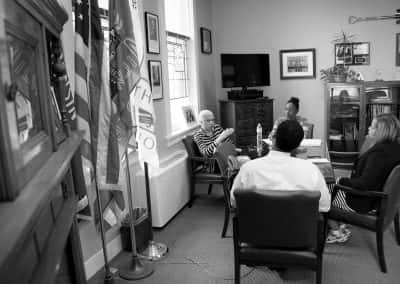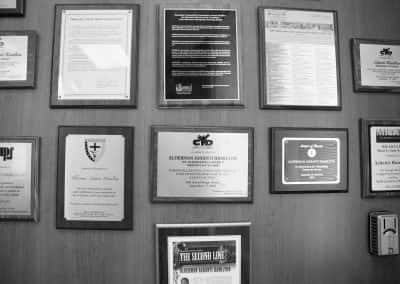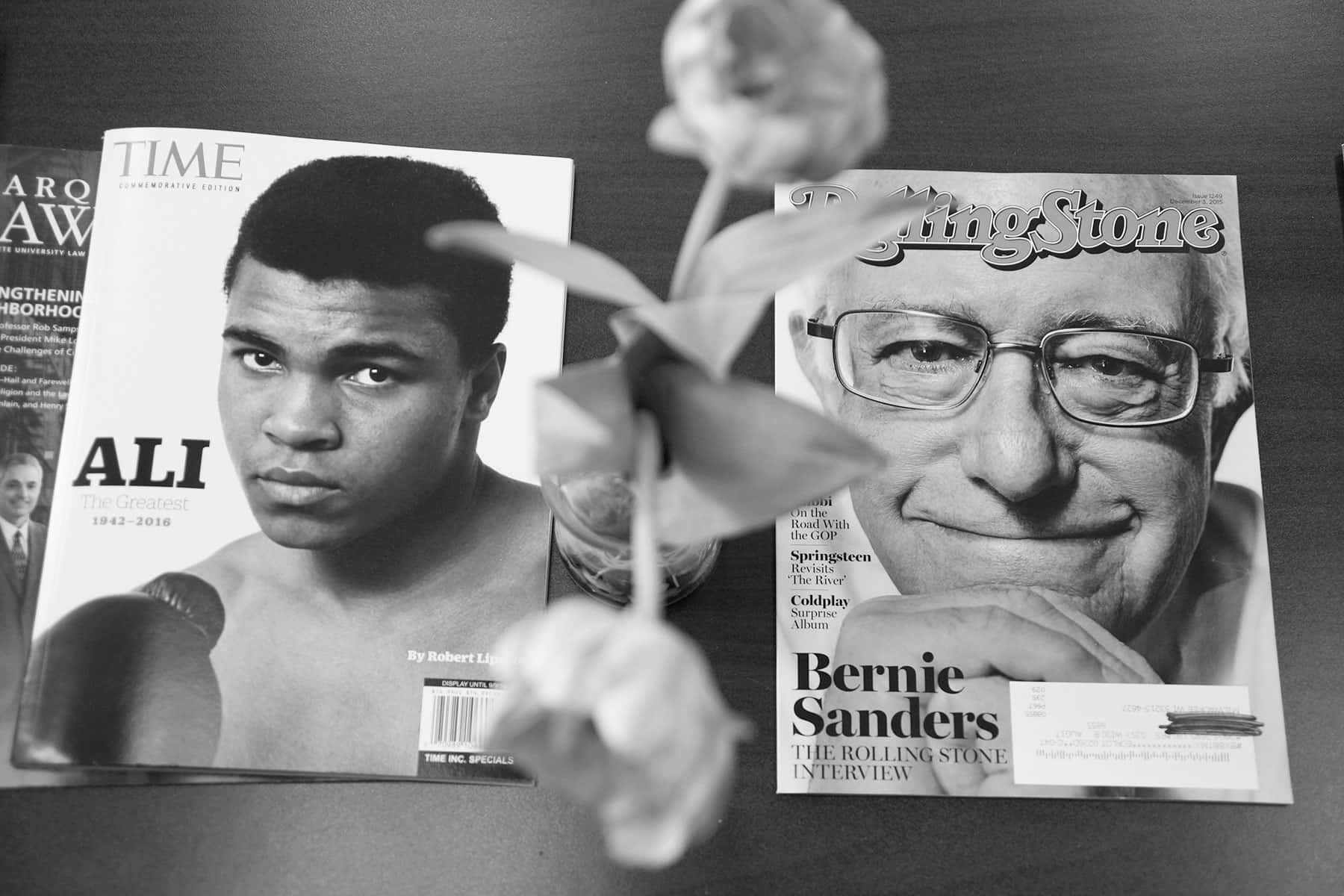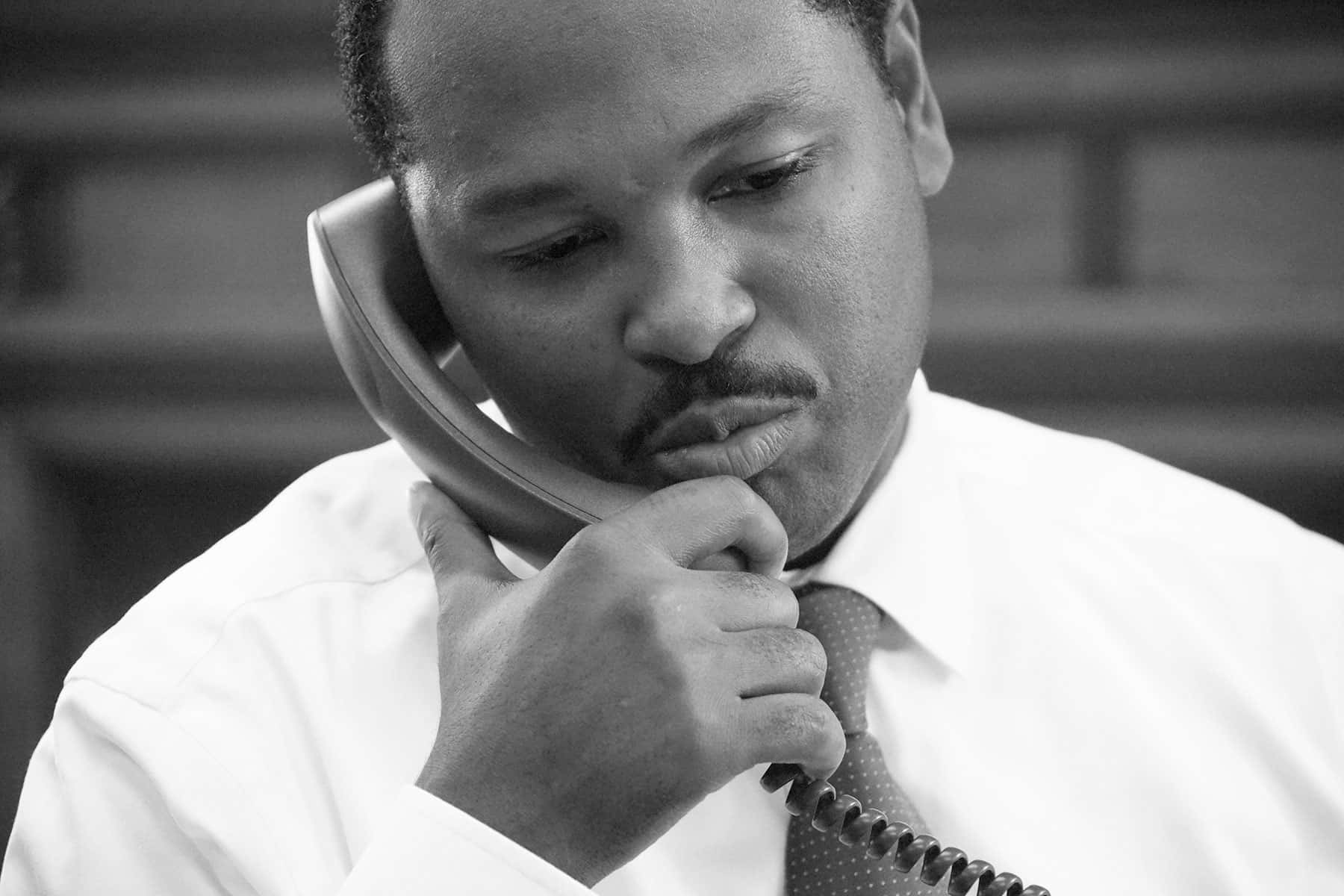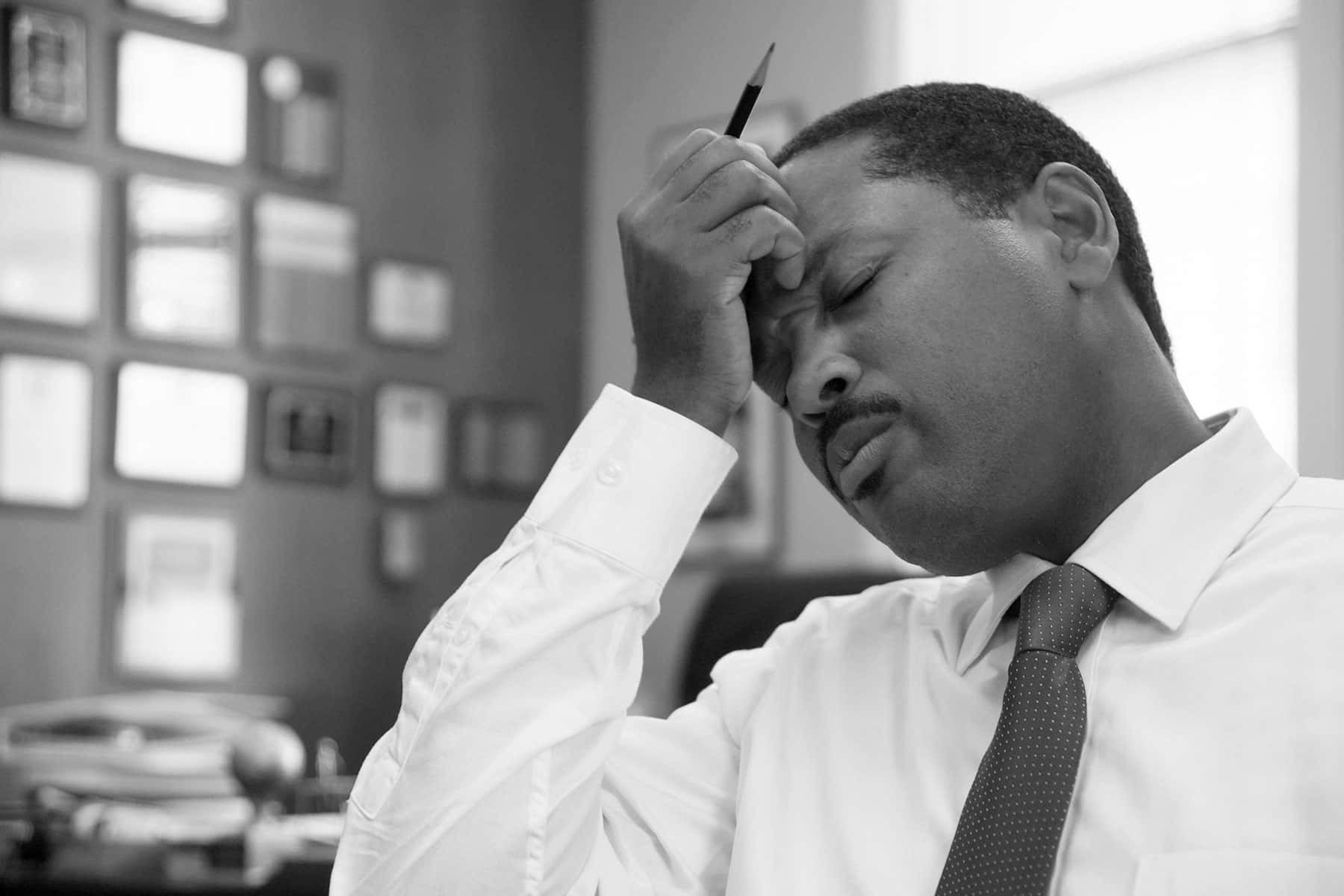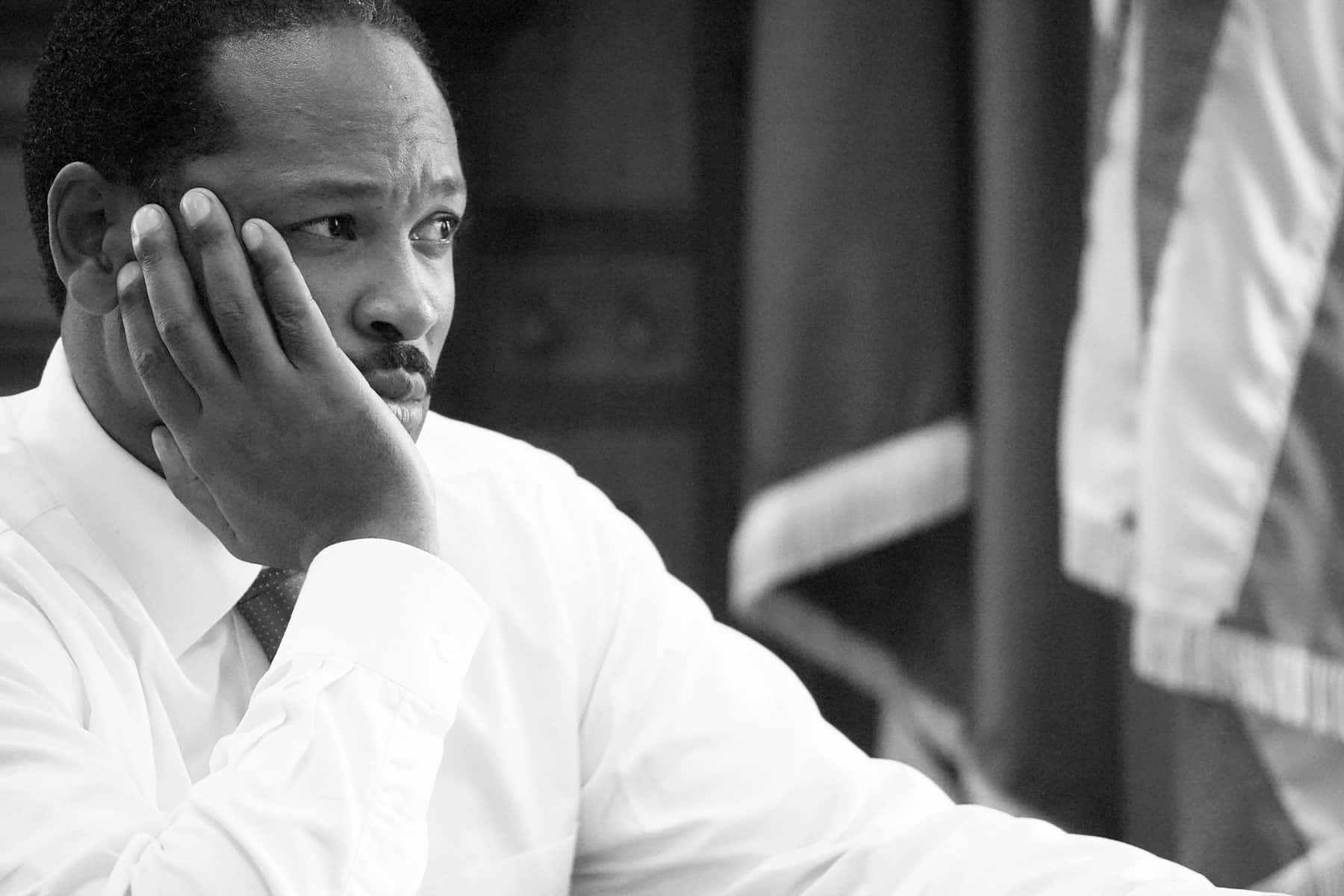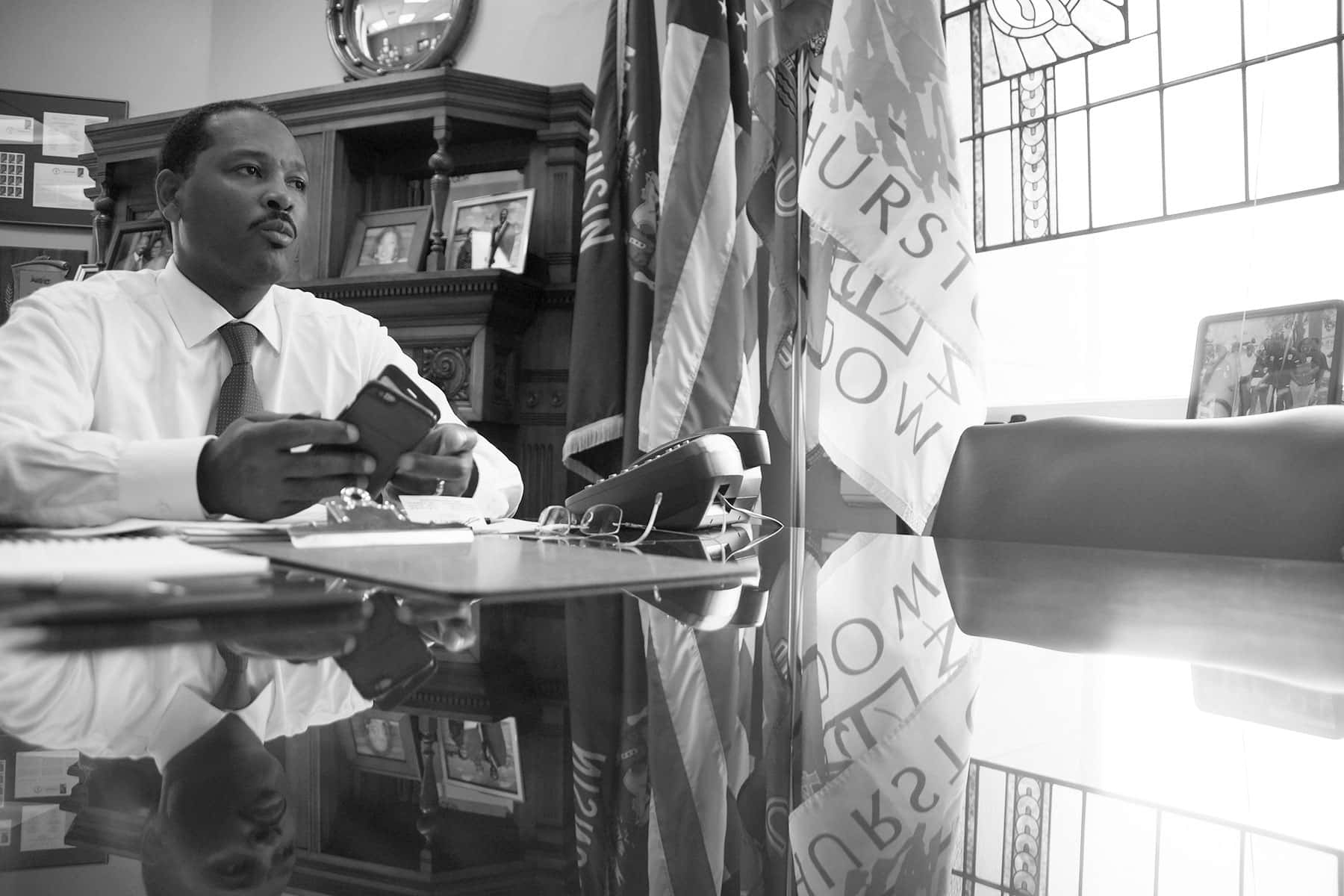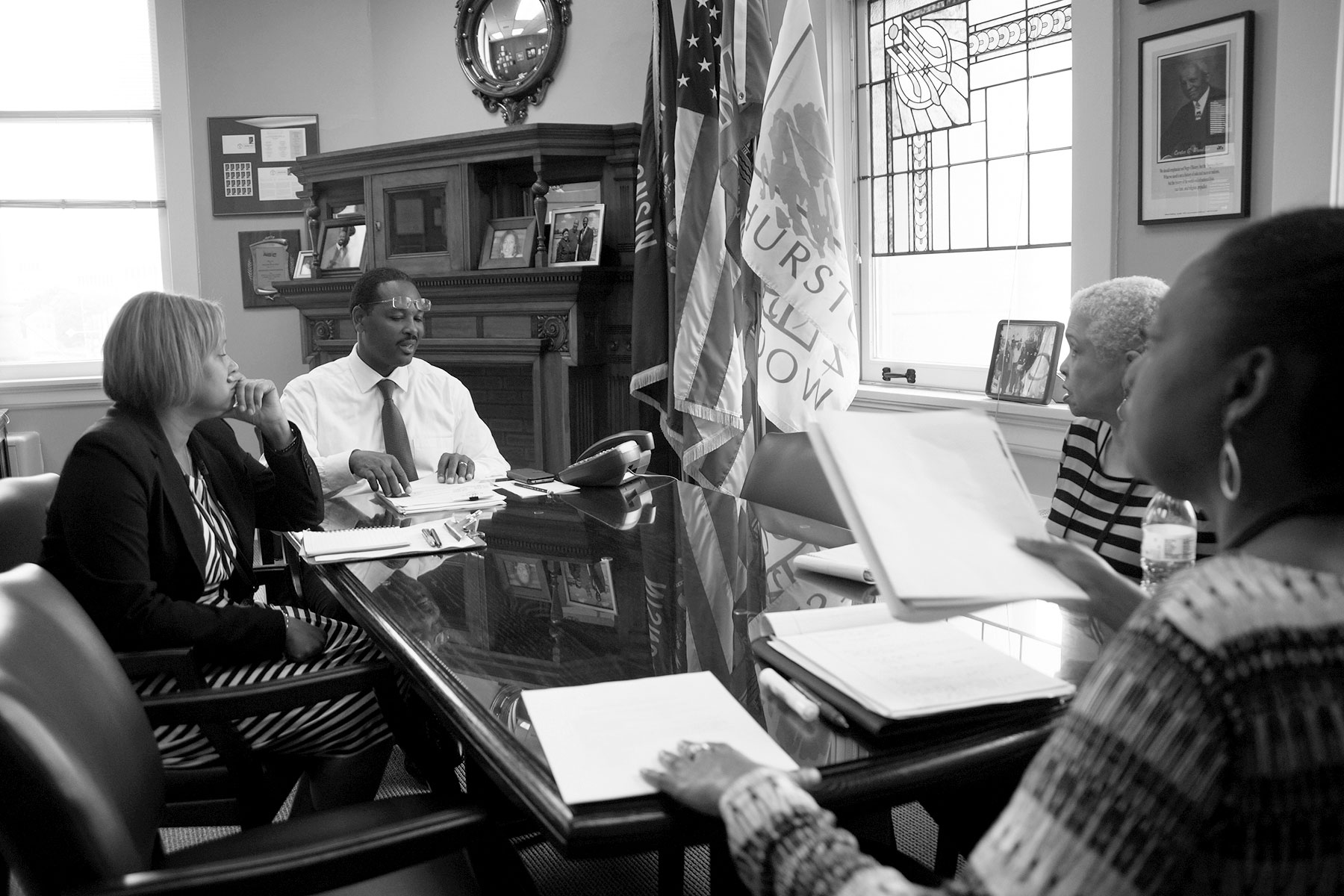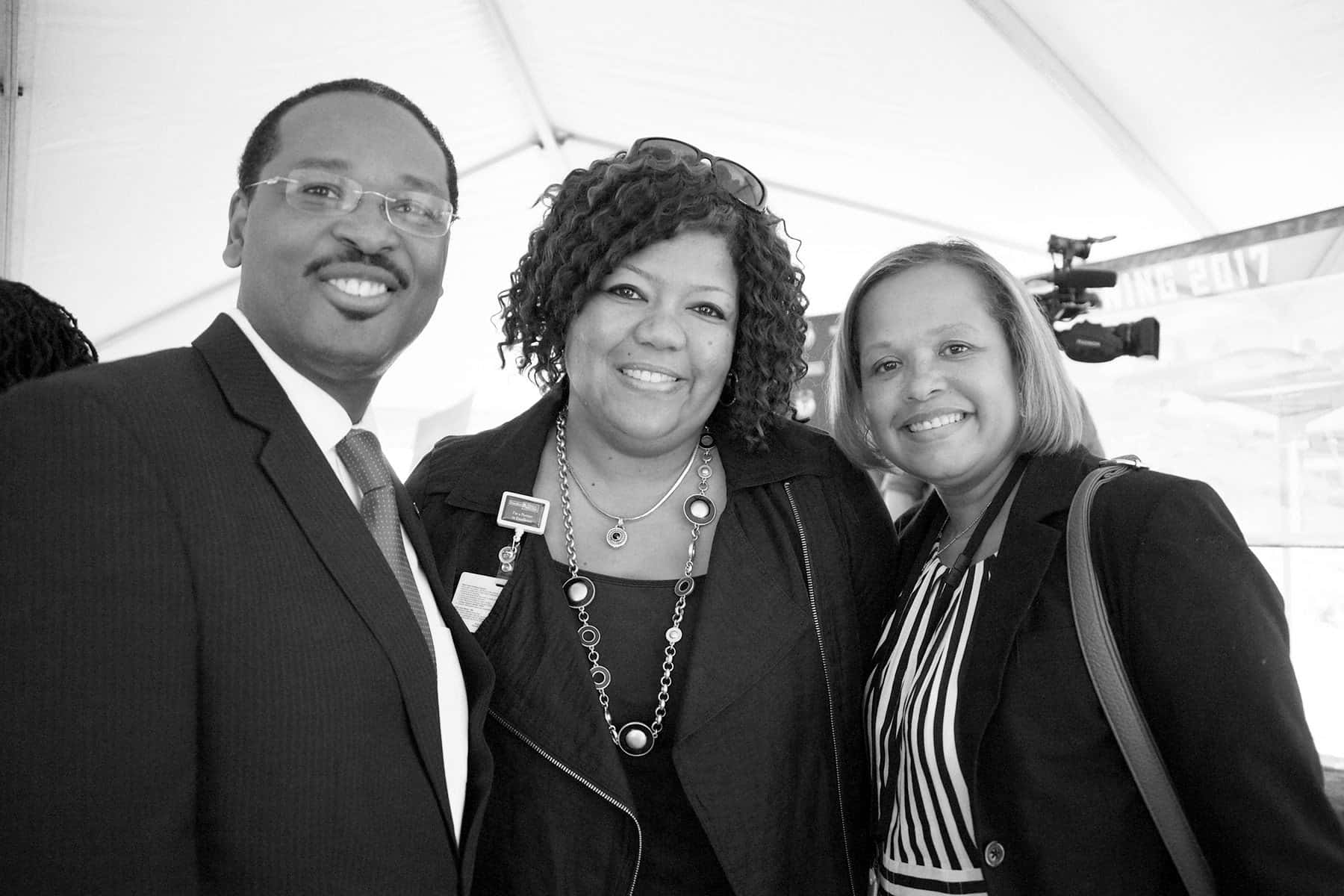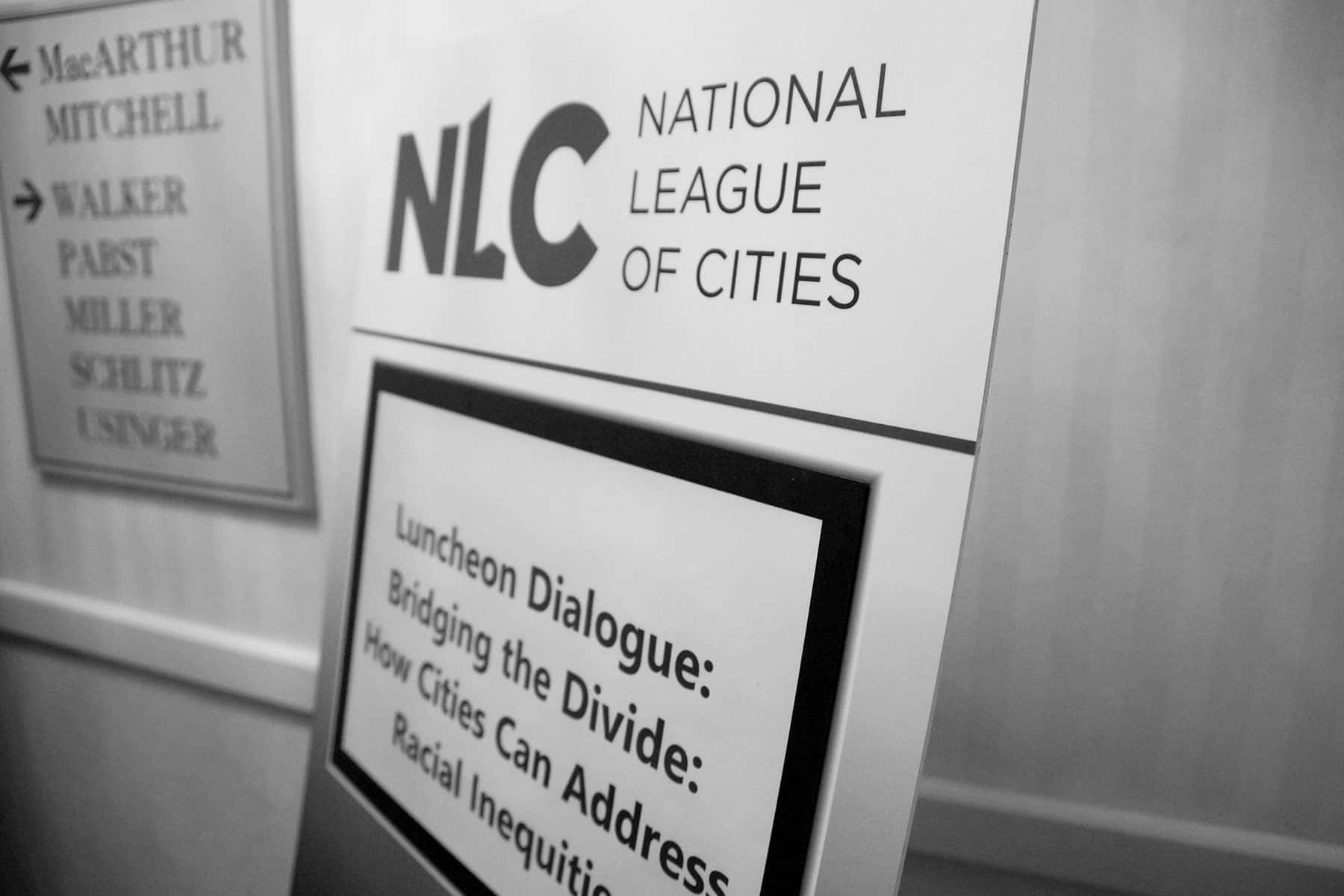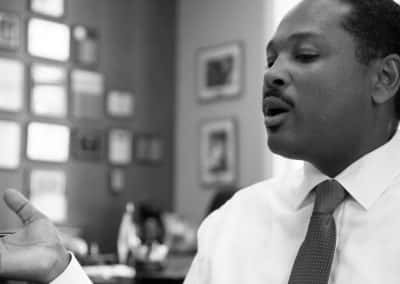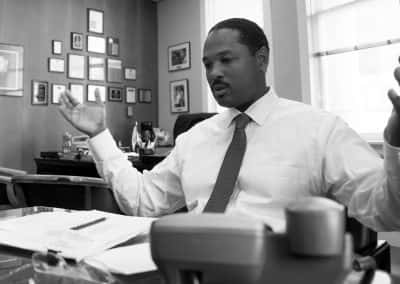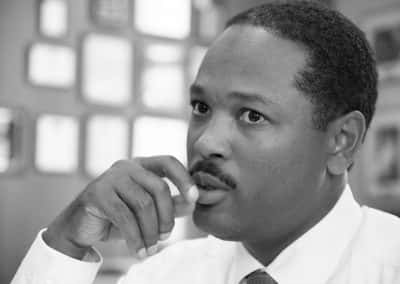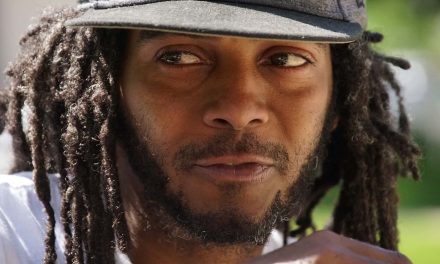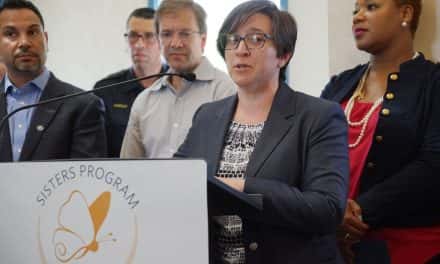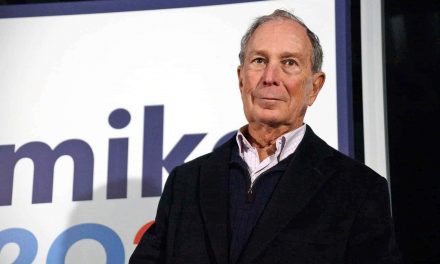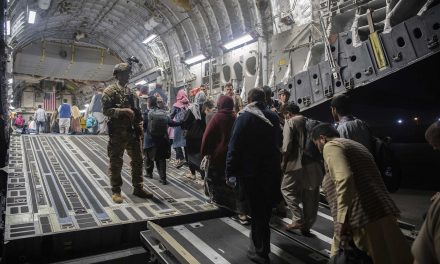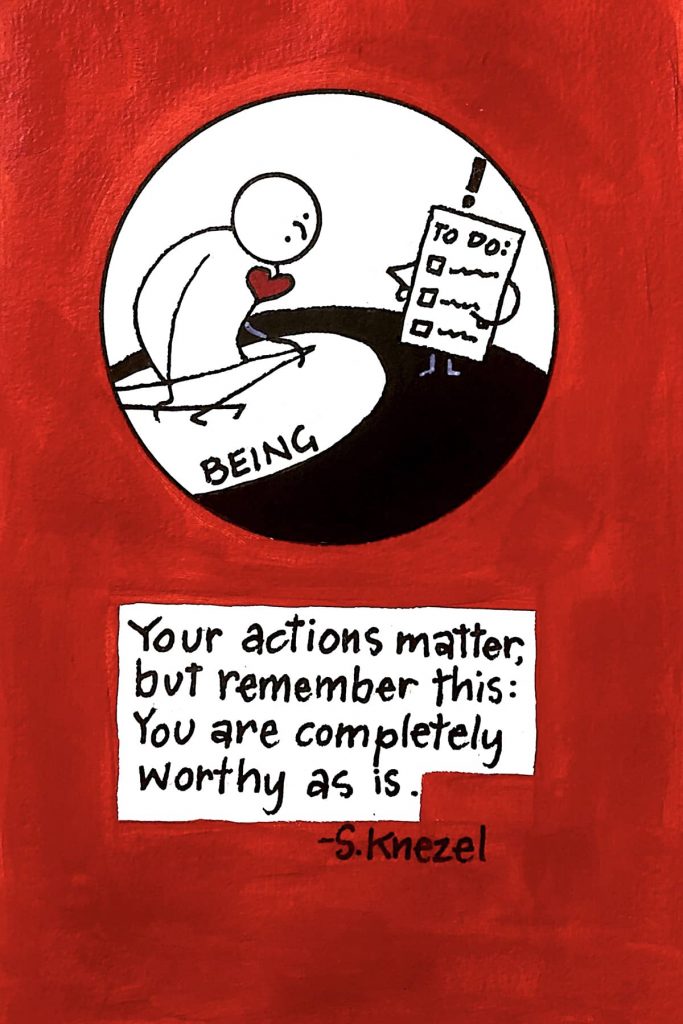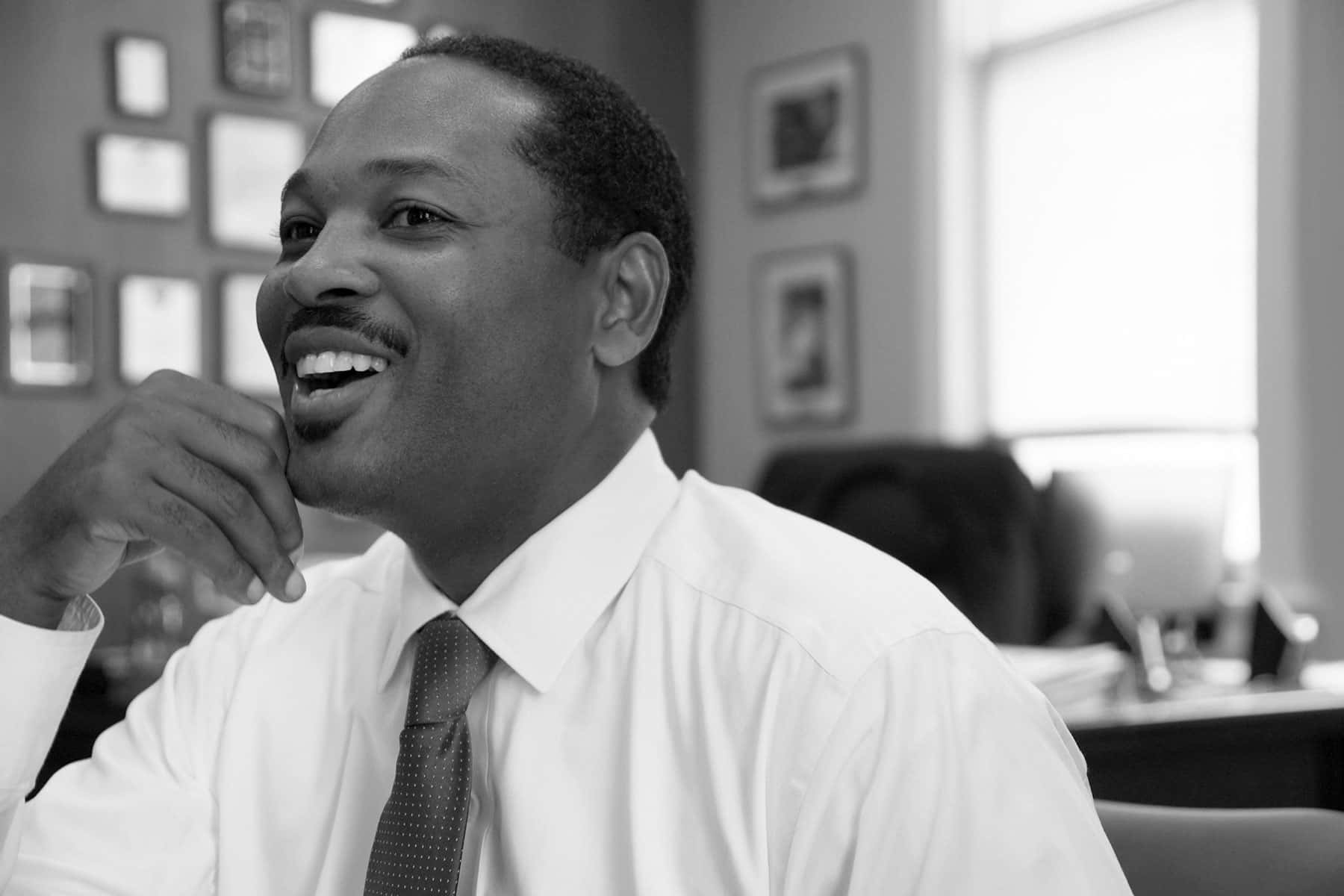
“The more we are able to do on the ground, to demonstrate certain things that work for the constituents we represent, the more opportunities there will be to create that alignment for our different levels of government. I think that is happening and what you were able to see it today.” – Ashanti Hamilton
Elected by his fellow Alderman to serve as the 48th President of the Milwaukee Common Council, Ashanti Hamilton is only the fourth African American in the city’s 170 year history to serve in that role. President Hamilton has an interesting and amazing background, both personally and politically. But this editorial feature is not a biographic look at him or his accomplishment. If members of the public are interested as a result of this visual report, they are encouraged to explore, research, and follow their own curiosity, instead of waiting for it to be prepackaged and served.
An average day with our Common Council President, during an unusual time for the City of Milwaukee
Like many of our previously published photo essays, President Hamilton granted open access to the Milwaukee Independent on August 26, to document his day in images. Friday, August 26 was literally selected at random and not meant to reflect an average day of President Hamilton’s schedule, of which there is no such thing as average. It is merely a snapshot of one day, and the events within it.
There is no editorial narrative as a companion to these photographs, only President Hamilton’s own words. These quotes were taken outside of the day’s events, except for statements given as public record during the filming of a WISN Channel 12 segment for UPFRONT with Mike Gousha.
Former Milwaukee Alderman Willie Wade and Common Council President Ashanti Hamilton held a private chat while leaving the press conference, where State funding for the Sherman Park area was announced. This conversation, like many others in reaction to Governor Walker’s news, were held informally and outside the regular sphere of press access.
“For example, as we were walking out with Willie Wade he said ‘You know, we’re getting ready to get this done. We’ve been working on this for five years, and now finally!’ Nobody will ever see that. They’ll just see this event where the Governor comes in. It was major leadership on Governor Walker’s part to actually step-up and find resources, and put it to something. But there had to be something to put it to. There had to be an idea, had to be a strategy, had to be something to put those resources toward.” – Ashanti Hamilton
“There are a lot of moving pieces when it comes to the City of Milwaukee. And even though the news media wants to report what’s happening around the city in short soundbites, the truth of the matter is there are a bunch of different things all happening at the same time and they are actually interconnected. We are not as disconnected as people may think we are.” – Ashanti Hamilton
“You saw at that event something that you typically don’t see when you are trying to address the issues of poverty in the City of Milwaukee. You saw the executive director of the state – the governor, you saw the county executive, you saw the mayor, and the common council president, all standing together identifying a specific problem that the community said needed to be addressed, and a quick agreement on what a solution should look like and what it could be. What I would like to see us do, is take that very same strategy and apply it to other neighborhoods throughout the city, and have that same impact we could have in the Sherman Park Neighborhood.” – Ashanti Hamilton
“Milwaukee is right for investment and ready to give a tremendous return on that investment. Many in the business community have come to the table. What they would like to see is a short-term strategy for dealing with the immediate concerns that exist in neighborhoods. A mid-term strategy to make sure that certain things are being carried out. And then a long-term strategy that people can be committed to, to make that lasting commitment to have an impact in the City of Milwaukee. We are trying to give them that platform, because it is their investment. Quite honestly, it’s the private sector investment into the City of Milwaukee that makes the difference.” – Ashanti Hamilton
“This whole experience of elected office is what you make it. You have to advocate on behalf of your constituency, and keep a broad sense of what’s happening in this city in order to pull many efforts forward. It is that intricate balance. Everywhere I go, I’m carrying the 1st District with me. I think its difficult to fit these stories, or events, or efforts into the :30 second television windows that reporters often have. So much seems to be left off the table.” – Ashanti Hamilton
Photojournalist’s Note:
On a wall in President Hamilton’s office are a series of framed black & white images. They were taken of him before he started classes at Marquette University, as a feature by Milwaukee Magazine in 1991.
Monochrome pictures are timeless, and express emotion far better than color photographs, which communicate information. After taking pictures at six different locations in one day, each with its own unique lighting, it was decided to converted them to black & white in post production.
By removing the color spectrum the images were equalized, so that viewers could see them as part of the same narrative regardless of where they were taken. The black & white pictures become bookends to the photographs already on President Hamilton’s wall, connecting 25 years from his youth to today.

